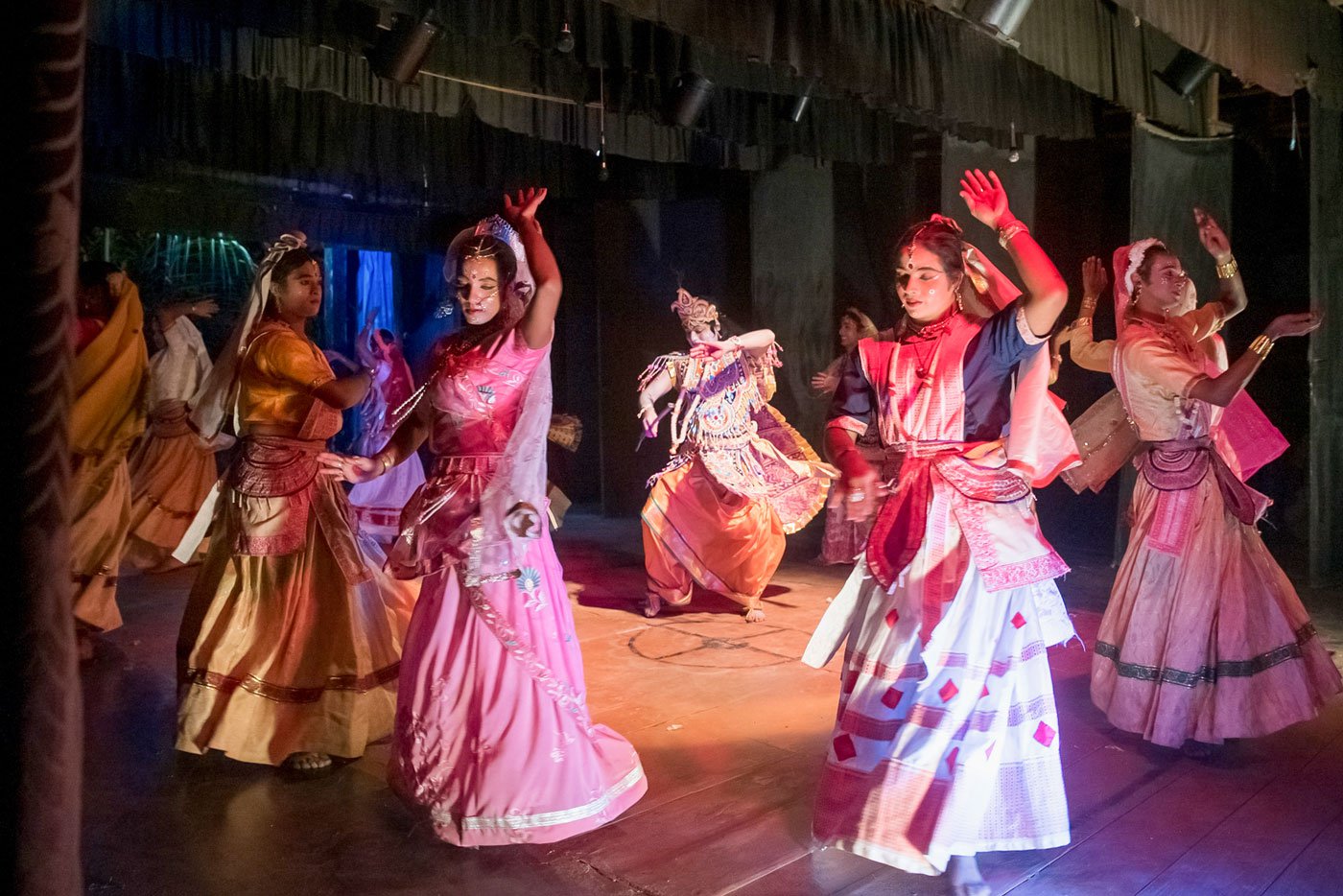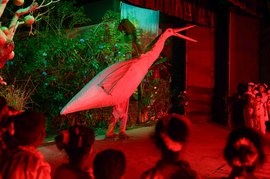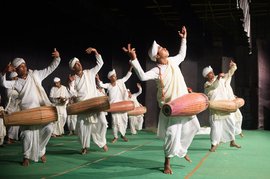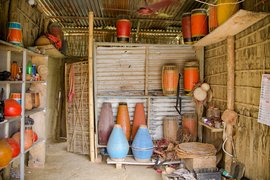For three days around November, Garamur market on Majuli island is ablaze with coloured lights and earthen lamps. As the early winter evening sets in, the beat of the khol drums and the clashing of taal cymbals blares out through the bank of loudspeakers scattered around.
The Raas Mahotsav has begun.
The festival is held on the purnima or full moon day of the Assamese months of Kati-Aghun – falling sometime during October and November – drawing pilgrims and tourists to this island every year. It continues for two days after as well.
“If it weren’t there, we would feel like we had lost something. It [Raas Mahotsav] is our culture,” says Raja Payeng, secretary of the committee organising the festival in Borun Chitadar Chuk village. “People eagerly wait for this all through the year,” he adds.
Hundreds of residents dressed in their best clothes, have gathered near the Garamur Saru Satra – one of the several Vaishnavite monasteries in Assam.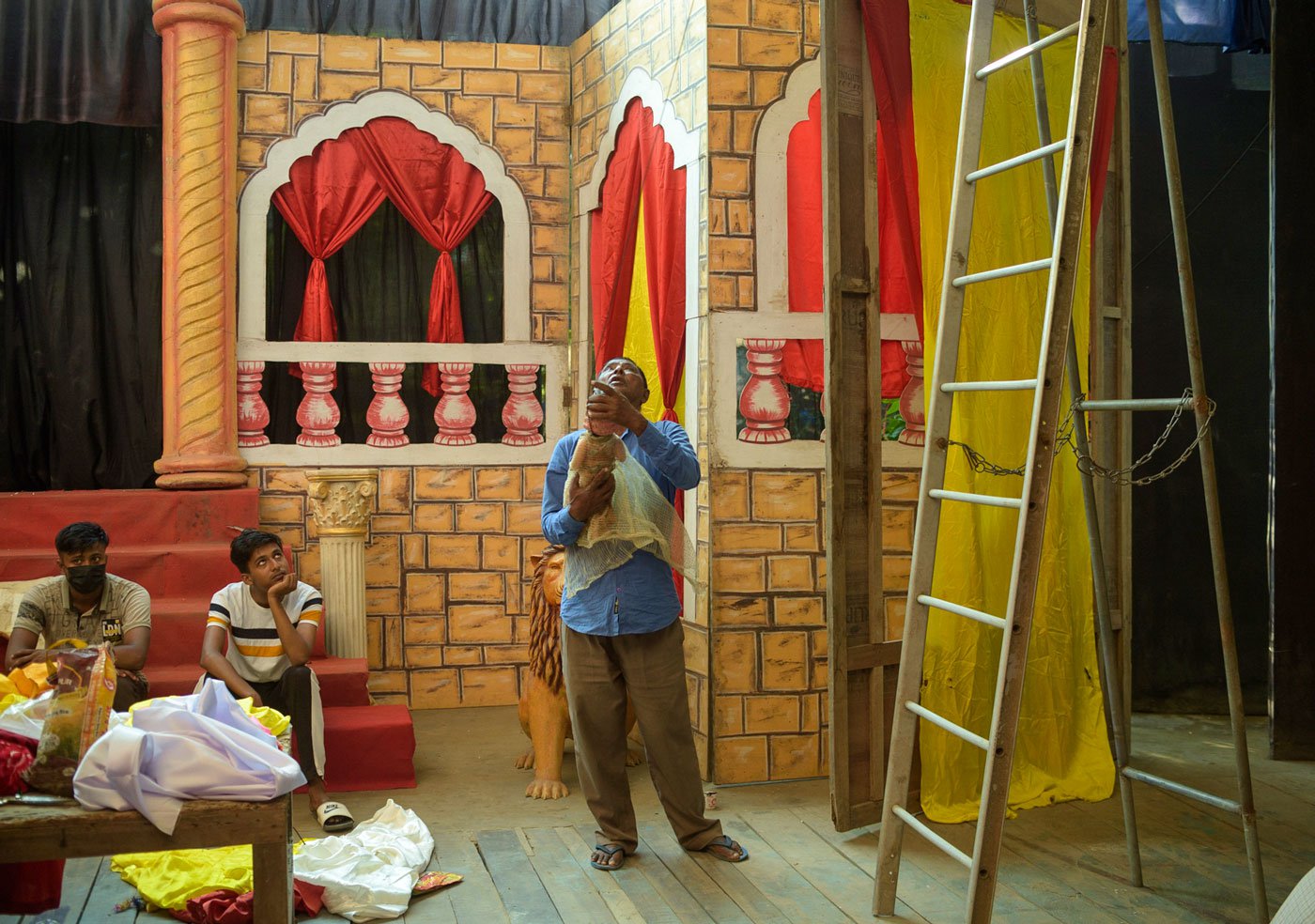
The Garamur Saru Satra is one of the more than 60 venues in Majuli, Assam where the mahotsav was held in 2022. Krishna Dutta, (standing) works on stage decorations
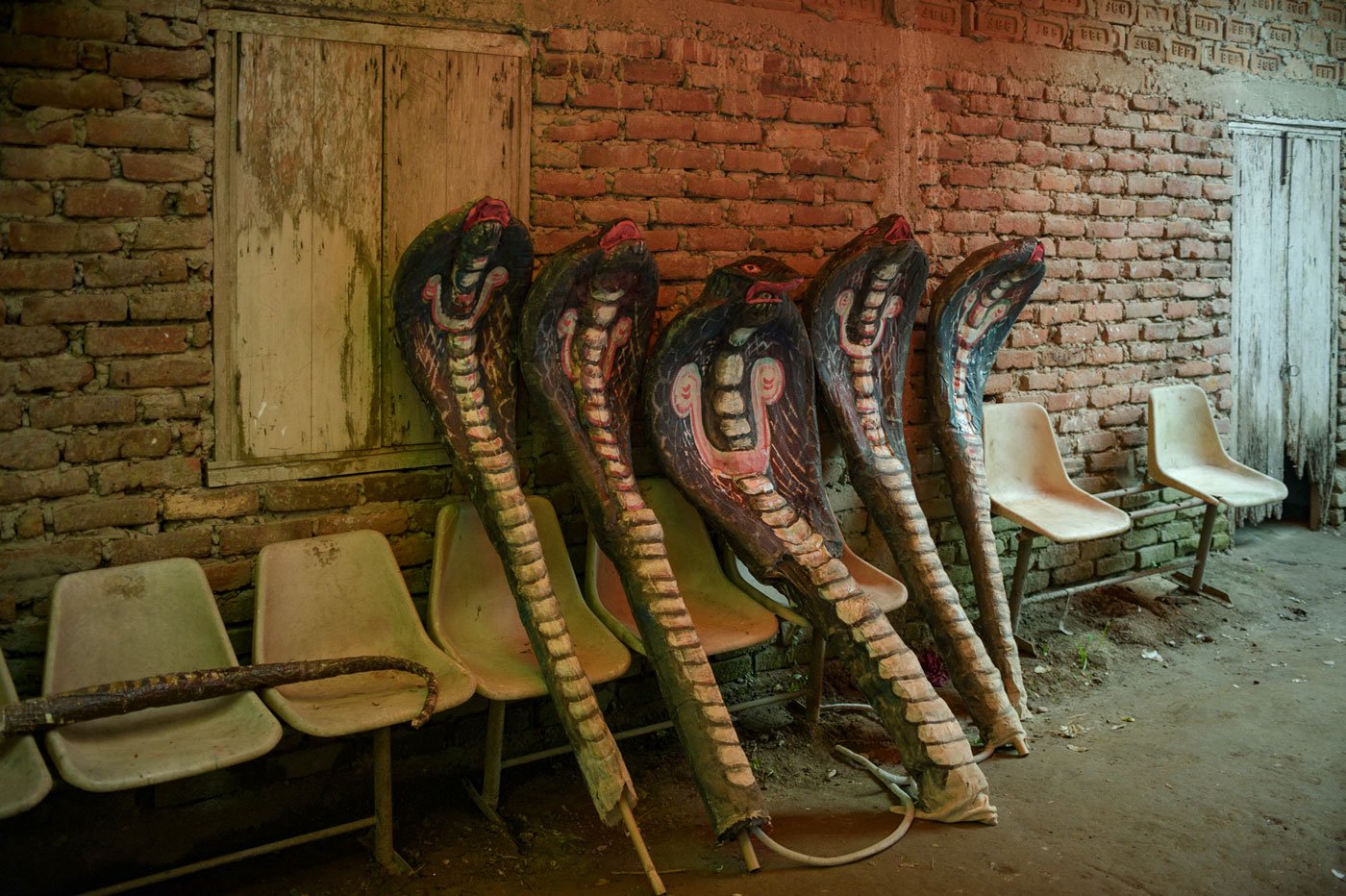
The five hoods of the mythical snake Kaliyo Naag rest against the wall at the Garamur Saru Satra. Handmade props such as these are a big part of the festival performances
Raas Mahotsav (festival of Krishna’s dance) celebrates the life of Lord Krishna through dance, drama and musical performances. More than 100 characters may be depicted on stage during a single day of the festival.
The shows depict various stages of his life – as a child growing up in Vrindavan to the raas lila he is said to have danced with the gopis (female cowherds). Some of the plays enacted during this time are variations of the ankiya naat (one-act plays) ‘Keli Gopal’ written by Sankaradeva and ‘Raas Jhumura’ attributed to his disciple Madhavadeva.
Mukta Dutta, who has played Vishnu at the Garamur mahotsav , says once he is cast, he has to follow certain traditions: “Since the day the role is given, those of us who play Krishna, Narayana or Vishnu usually observe the ritual of eating only vegetarian sattvik food. On the first day of raas , we observe a brot [fast]. We break the brot only after the performance is over on the first day.”
Majuli is a large island in the Brahmaputra that flows for about 640 kilometres through Assam. The island’s satras (monasteries) are centres of Vaishnavite religion as well as art and culture. Established by social reformer and saint Srimanta Sankaradeva in the 15th century, satras have played an important role in shaping the Neo-Vaishnavite Bhakti movement in Assam.
Of the 65 or so satras that were once established in Majuli, only around 22 remain operational today. The rest have faced erosion due to repeated flooding of the Brahmaputra – one of the largest riverine systems in the world. Himalayan glacial snow, which melts during the summer-monsoon months, feeds the rivers that empty into the river basin. This, along with the rainfall in and around Majuli, creates prime conditions for erosion.
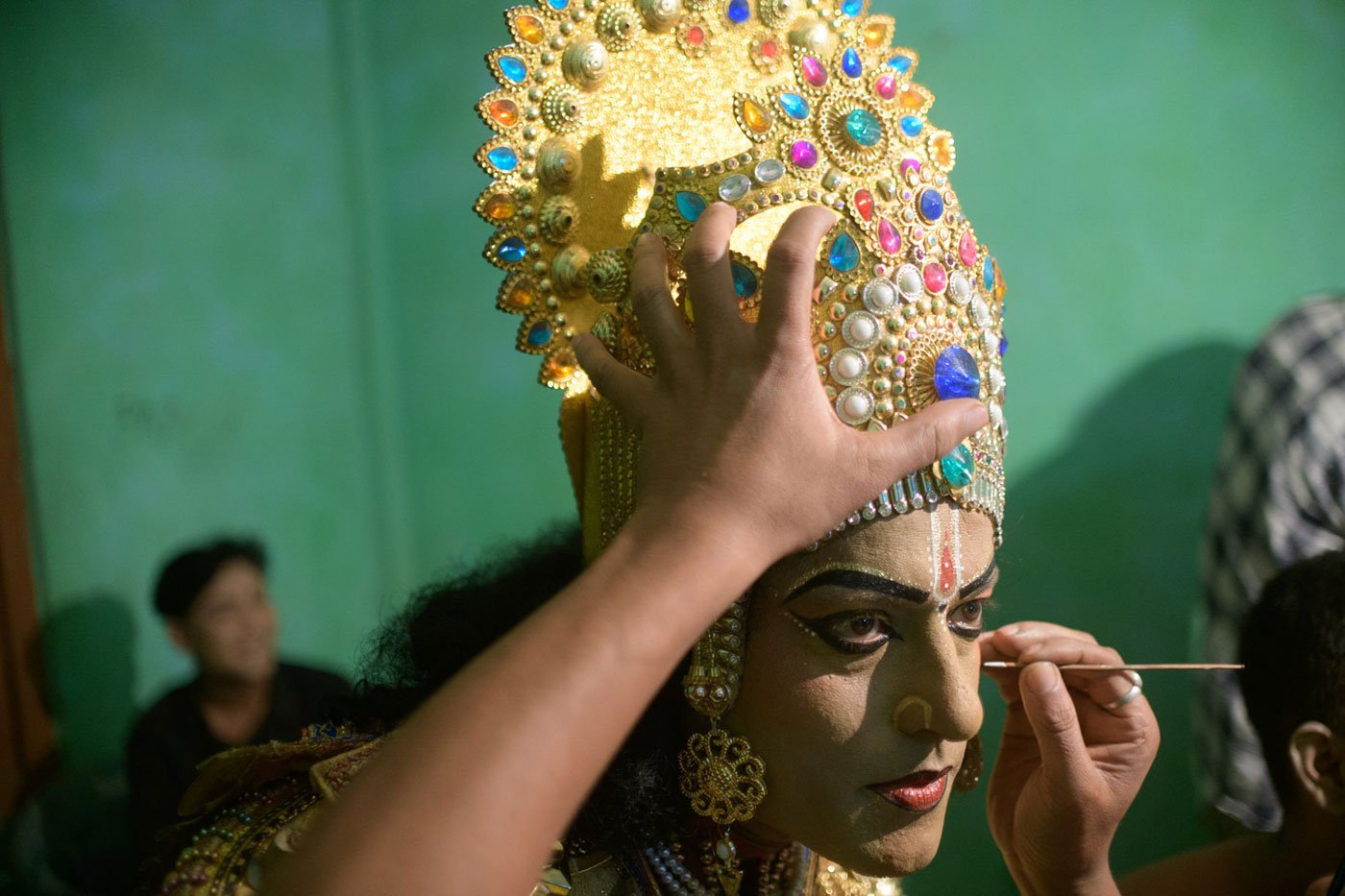
Mukta Dutta, who plays the role of Vishnu is getting his makeup done
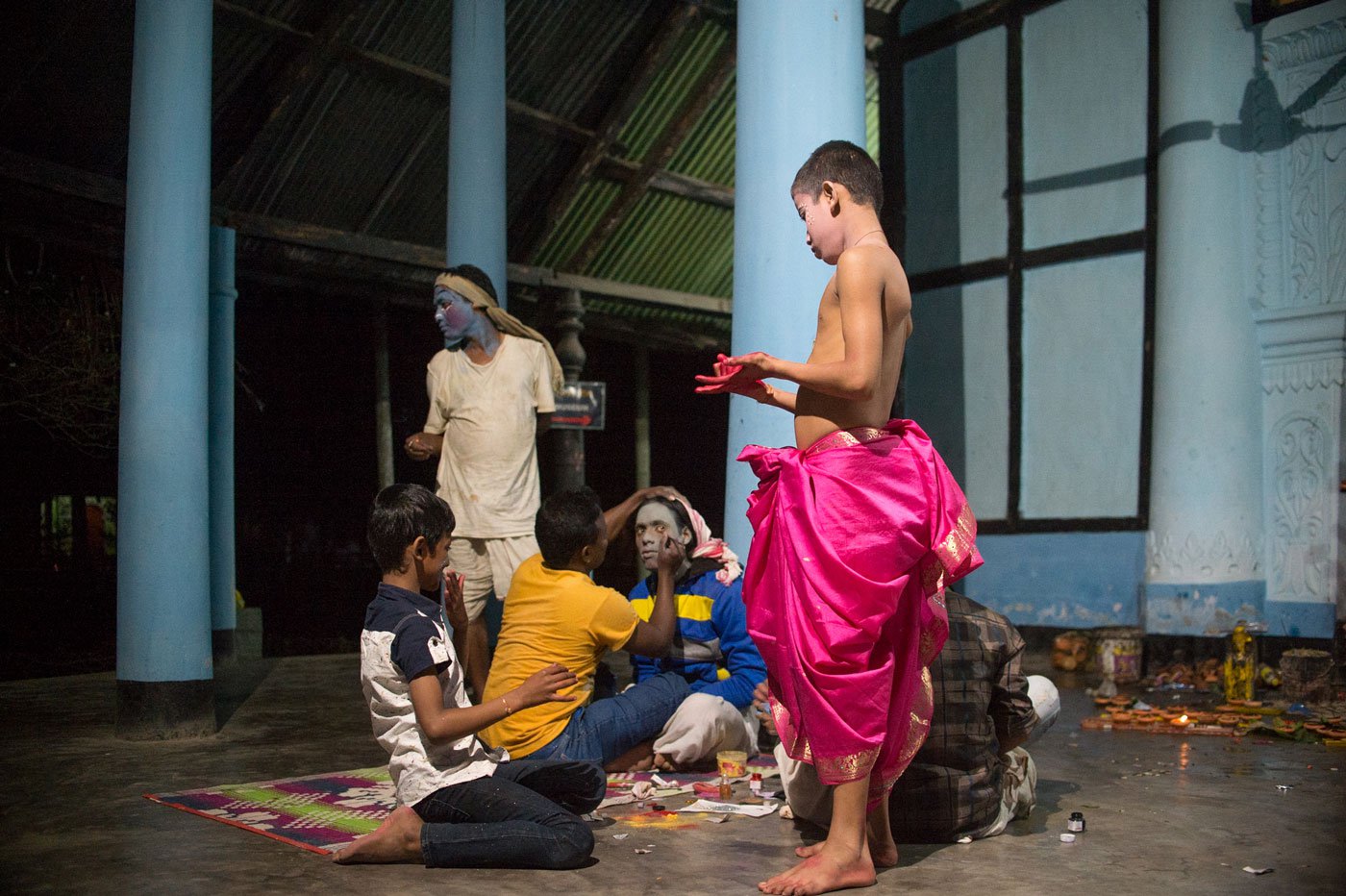
Monks of the Uttar Kamalabari Satra
getting ready for their 2016 performance at the Raas Mahotsav
The satras function as venues for the celebration of the Raas Mahotsav and different communities across the island organise celebrations and performances in community halls, makeshift stages in open fields and even on school grounds.
Unlike the Garamur Saru Satra, the performances by the Uttar Kamalabari Satra do not generally include women. Here, celibate monks of the satra called bhakats , who have been provided religious and cultural education, perform in the plays that are free and open to all.
Indranil Dutta, 82, is one of the founders of the Raas Mahotsav in the Garamur Saru Satra. He recalls how in 1950, Pitambar Dev Goswami, the Satradhikar (head of the satra ), discontinued the tradition of having only male actors and welcomed female actors in the performances.
“Pitambar Dev had the stage constructed outside of the [traditional space] of the namghar [prayer house]. Since the namghar was a place of worship, we brought the stage out,” he recalls.
The tradition continues even today. Garamur is one of the more than 60 venues where the Mahotsav is organised. Performances are ticketed and take place in an auditorium with seating arrangements for around 1,000 people.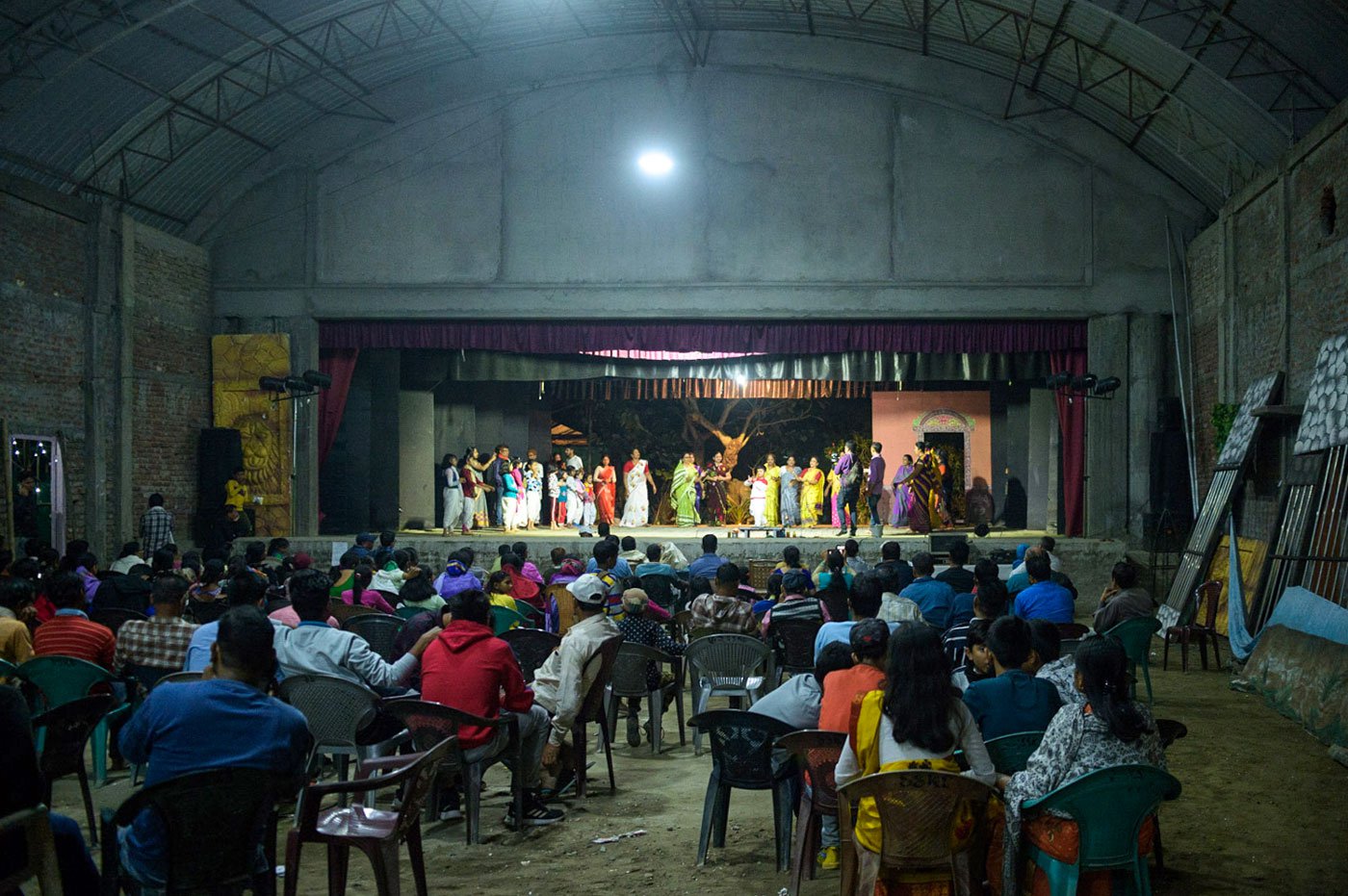
![Right: Children rehearse for their roles as gopa balaks [young cowherds]. A mother fixes her child's dhoti which is part of the costume](/media/images/06b-_PRK8941-PB-Raas_Mahotsav_and_the_satr.max-1400x1120.jpg)
Left: The rehearsals at the Garamur Satra begin two weeks before the
mahotsav
. Right: Children rehearse for their roles as
gopa balaks
[young cowherds]. A mother fixes her child's dhoti which is part of the costume
The plays performed here are variations of the plays written by Sankaradeva and others in the Vaishnavite tradition, adapted into something new by the experienced artists. “When I write the play, I introduce elements of lok sanskriti [folk culture] into it. We have to keep alive our jati [community] and our sanskriti [culture],” says Indranil Dutta.
“The main rehearsal starts only the next day after Diwali,” says Mukta Dutta. This gives the performers less than two weeks to be ready. “People who have acted before live in different places. To bring them back is inconvenient,” says Dutta who in addition to be being an actor, also teaches English at the Garamur Sanskrit tol (school).
College and university exams often coincide with the mahotsav . “[Students] still come, even if for a day. They play their role in the raas and leave the next day for their exams,” adds Mukta.
The cost of organising the festival increases every year. In Garamur, it was around Rs. 4 lakhs in 2022. Mukta says, “We pay the technicians. All the actors are volunteers. Around 100 to 150 people – they all work voluntarily.”
The Raas Mahotsav in Borun Chitadar Chuk is held in a school and organised by members of the Mising (or Mishing) community, a Scheduled Tribe in Assam. In the last few years, a lack of interest of the younger generation and high levels of migration out of the area have reduced the number of performers. But still they persist, “If we don’t organise it, we might have something amangal [inauspicious] happen in the village,” says Raja Payeng. “That is the popular belief in the village.”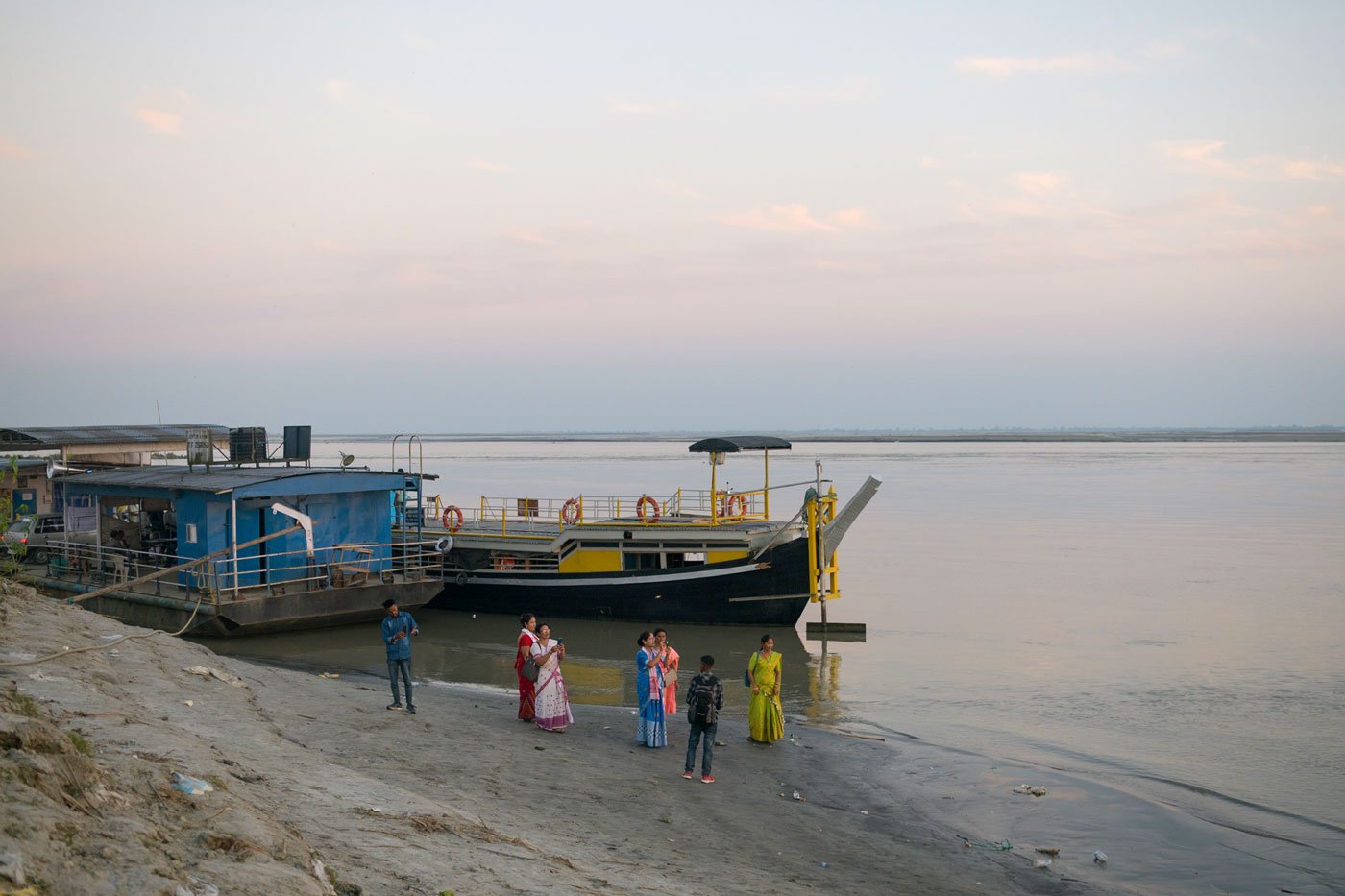
The Raas festival draws pilgrims and tourists to Majuli every year. The Kamalabari Ghat situated on the Brahmaputra river, is a major ferry station and is even busier during the festival

For the last 11 years, Bastav Saikia has been travelling to Majuli from Nagaon district to work on sets for the festival. Here, he is painting the backdrop for Kansa's throne to be used at the Garamur performance
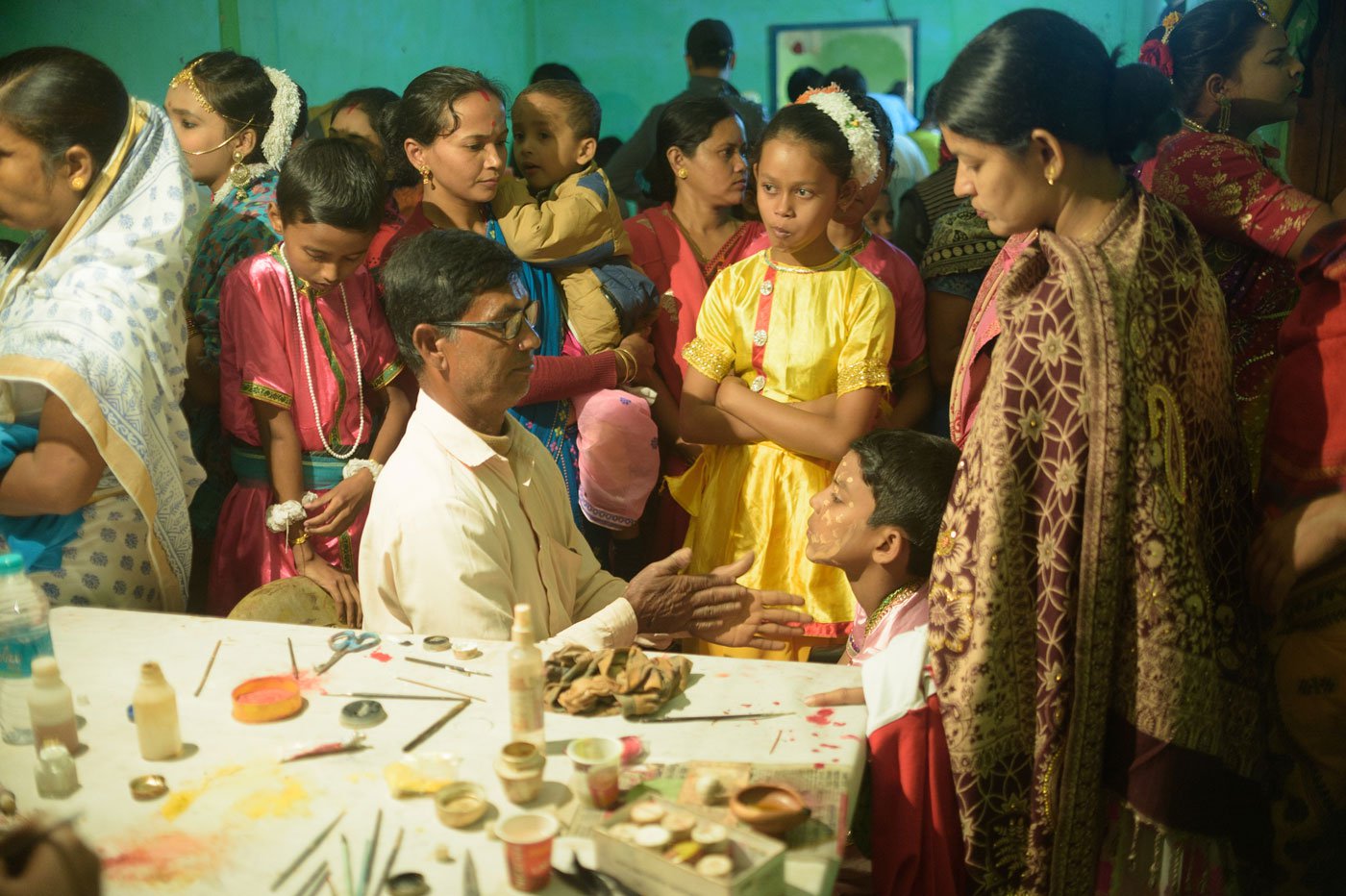
Parents and guardians assemble to have their children's makeup done by Anil Sarkar (centre), a teacher in the local primary school
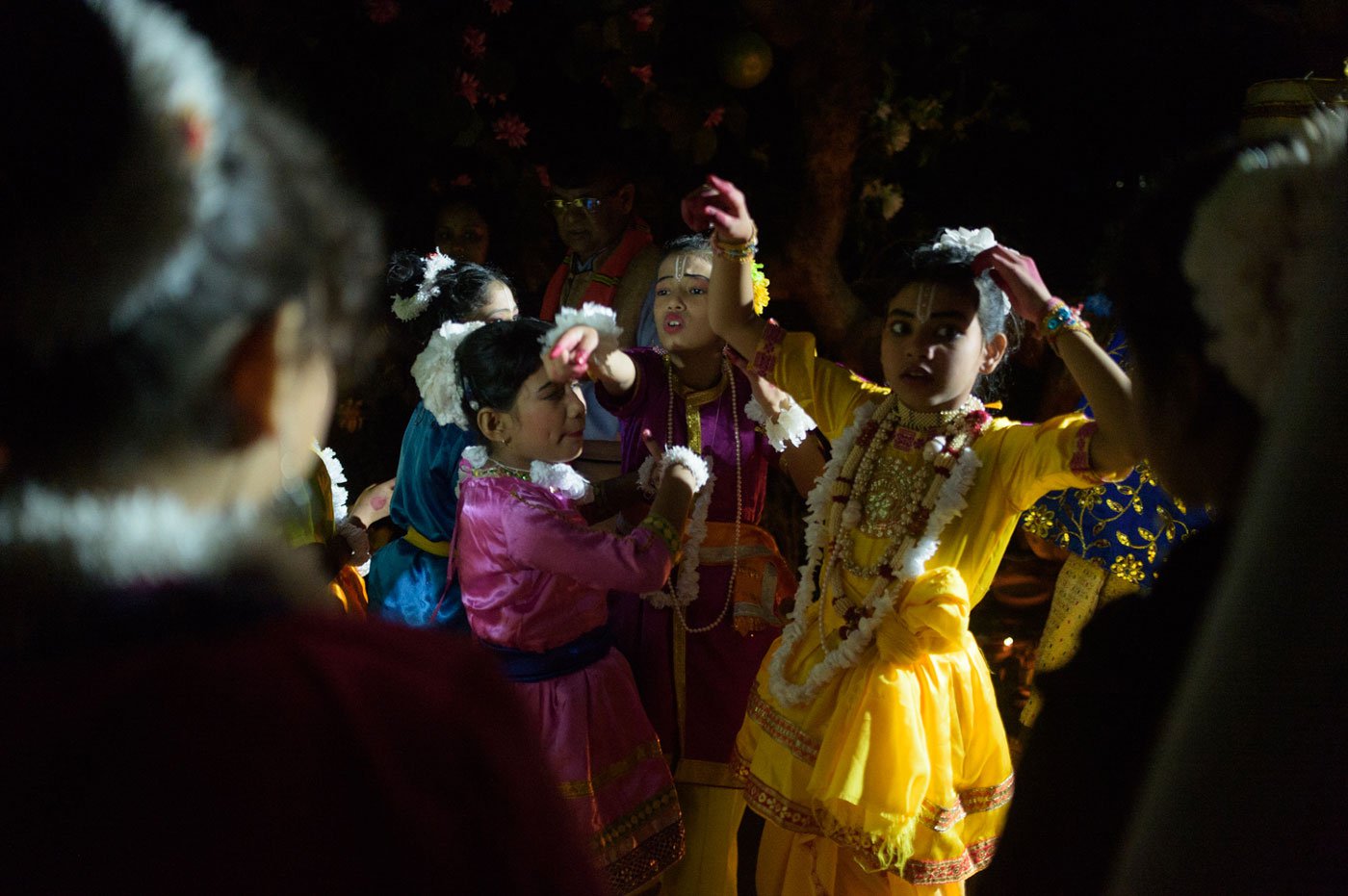
Backstage, children dressed as
gopa balaks
prepare for their scenes
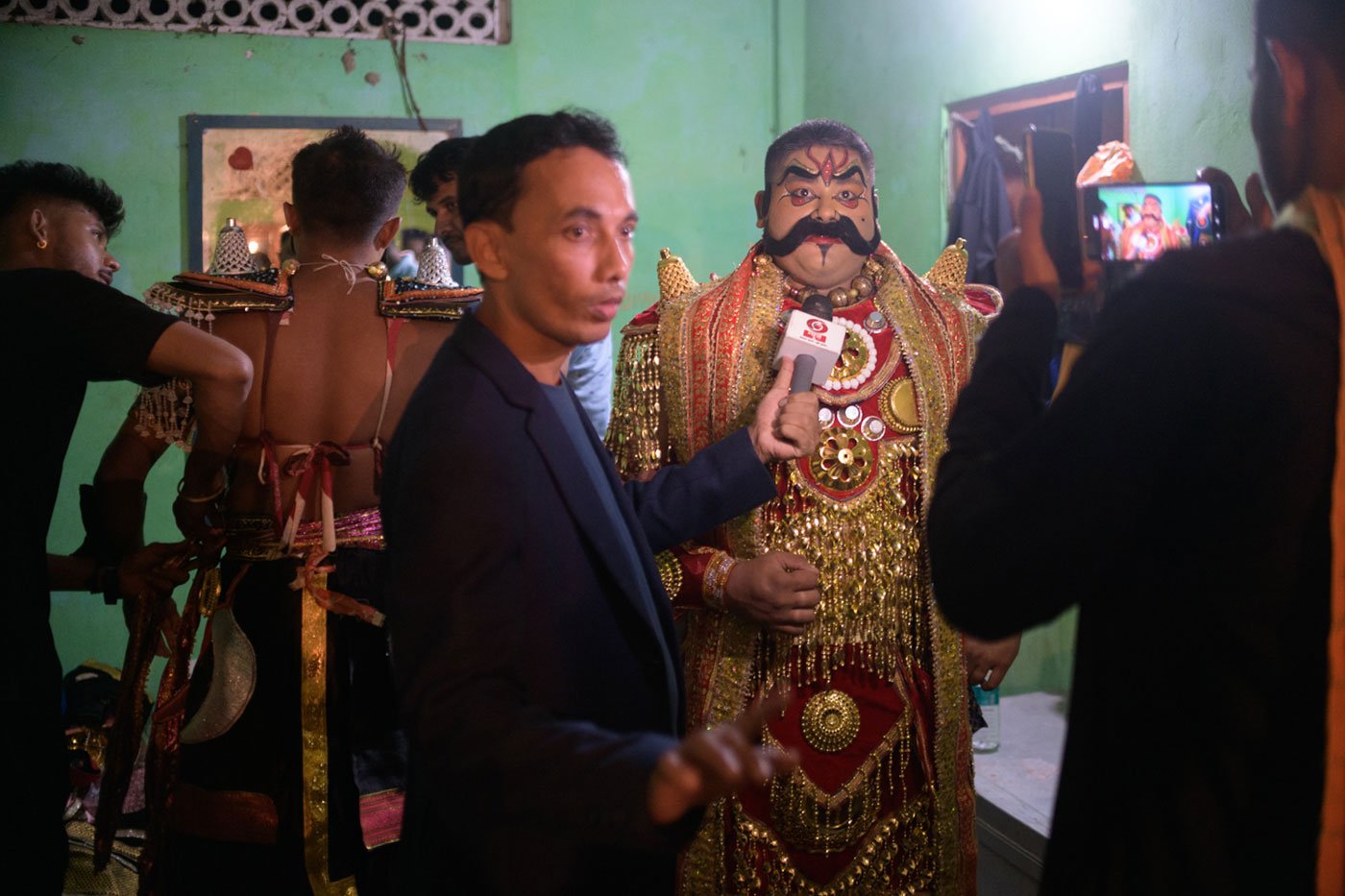
Reporters interviewing Mridupawan Bhuyan, who plays the role of Kansa, at the Garamur Saru Satra's festival

Mukta Dutta comforts a sleepy child backstage
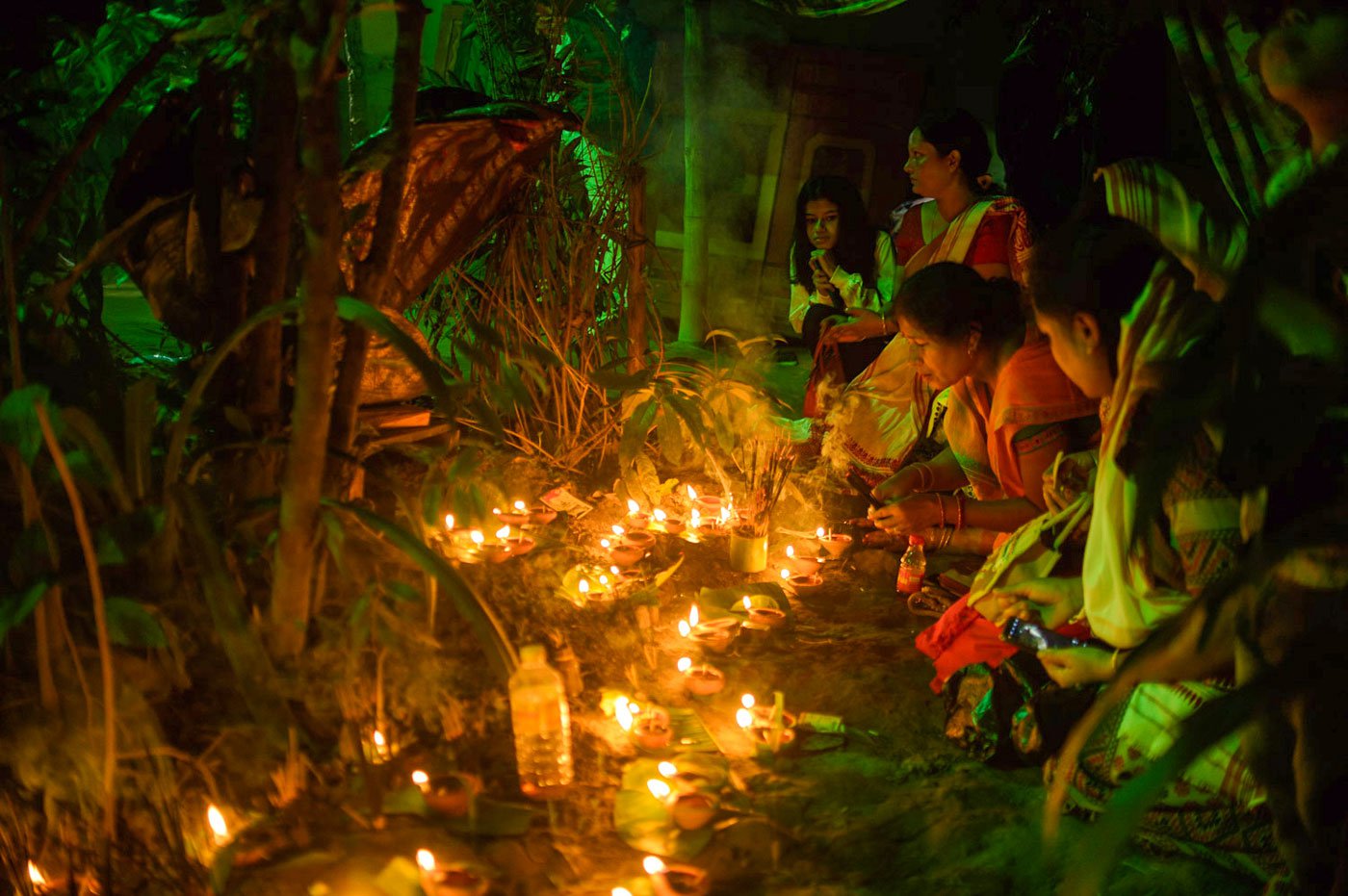
Women light
diyas
and incense sticks around a figure of Kaliyo Naag. The ritual is part of the prayers performed before the festival begins
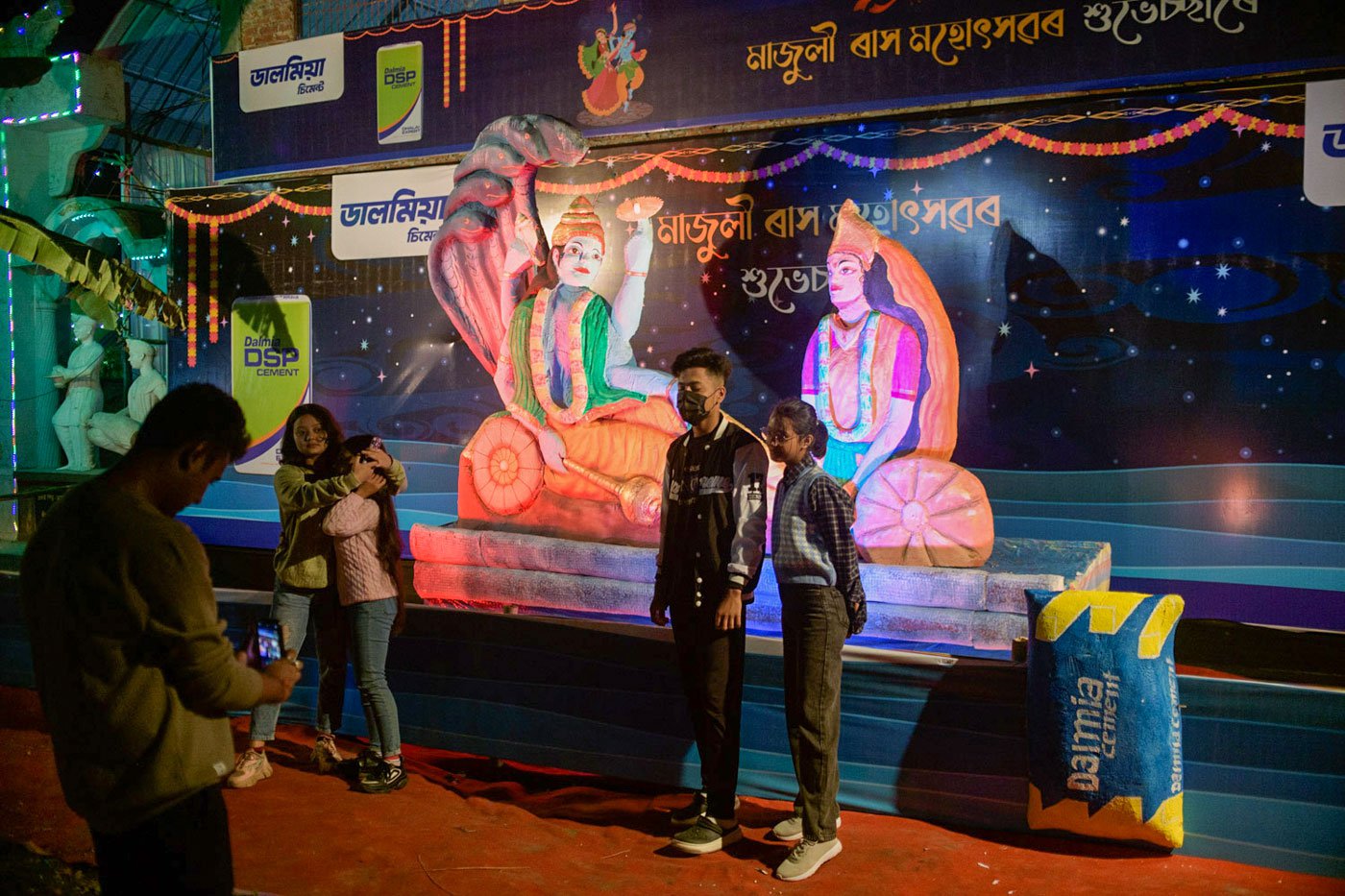
People take photographs near the gates of the Garamur Saru Satra
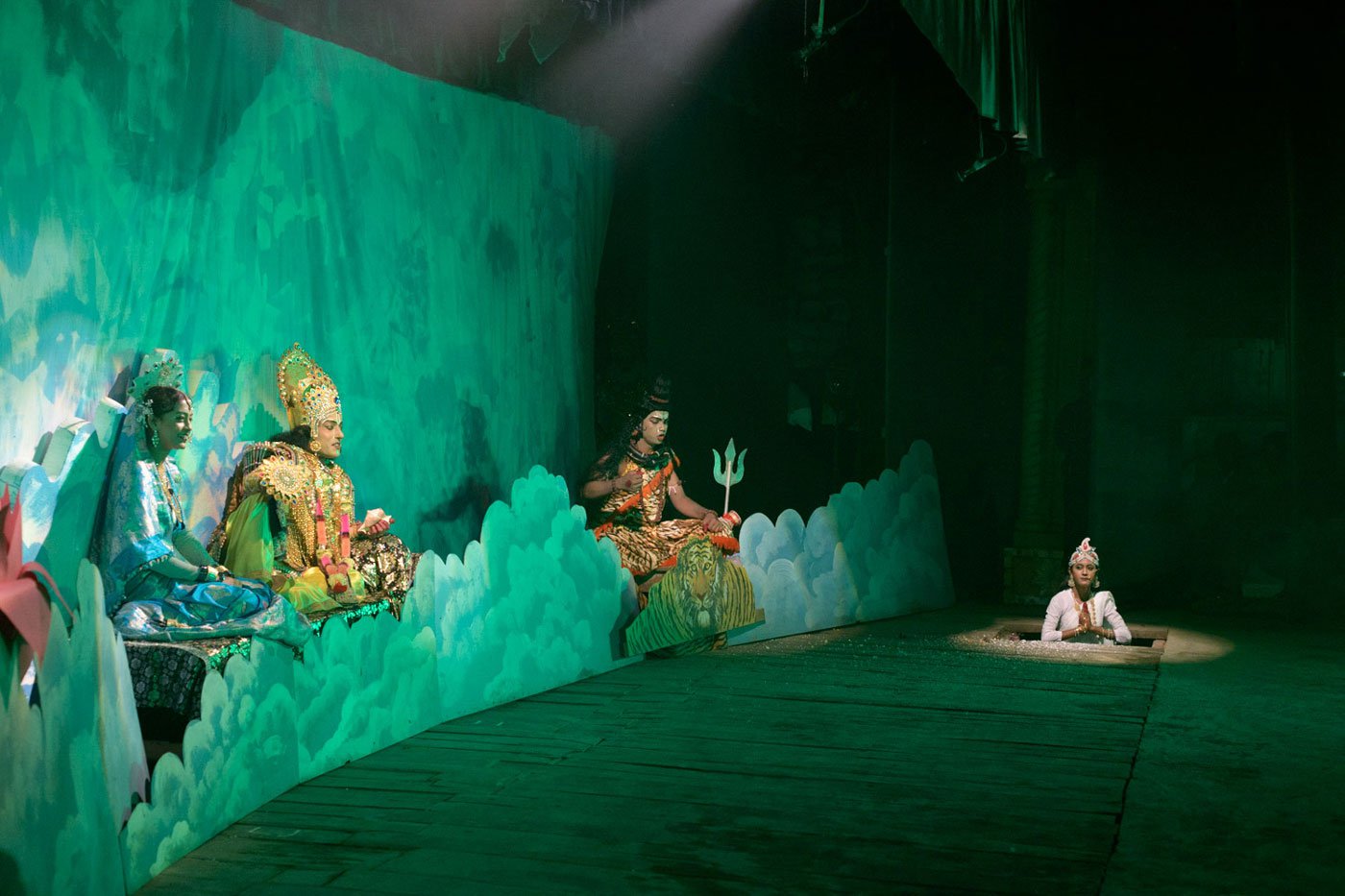
In the
prastavana
– the first scene of the play – Brahma (right), Maheshwara (centre), Vishnu and Lakshmi (left) discuss the state of affairs on earth
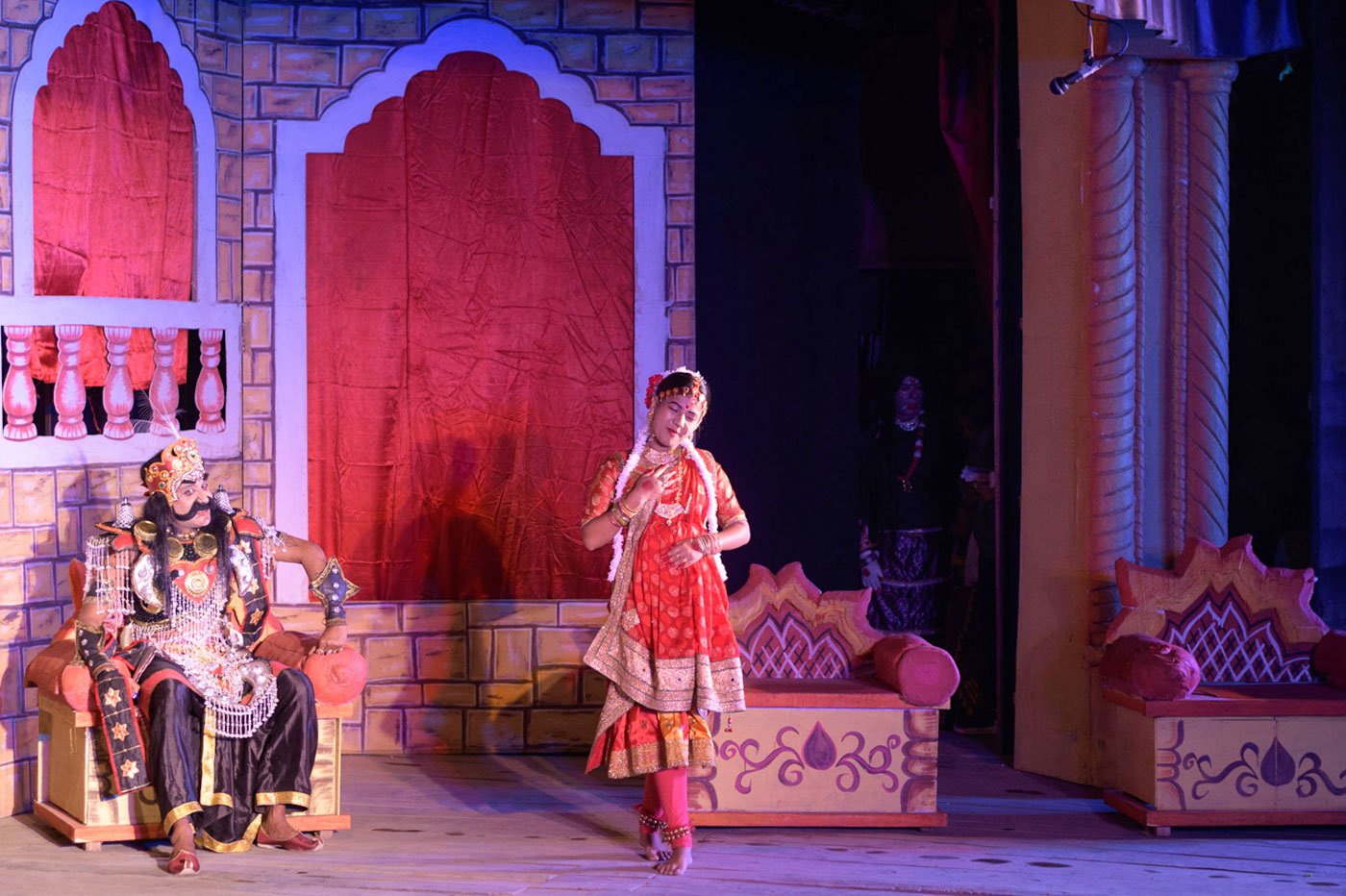
The demoness or rakshasi Putona (centre) in her form as a young woman (Mohini Putona) promises Kansa (left) that she can kill the baby Krishna
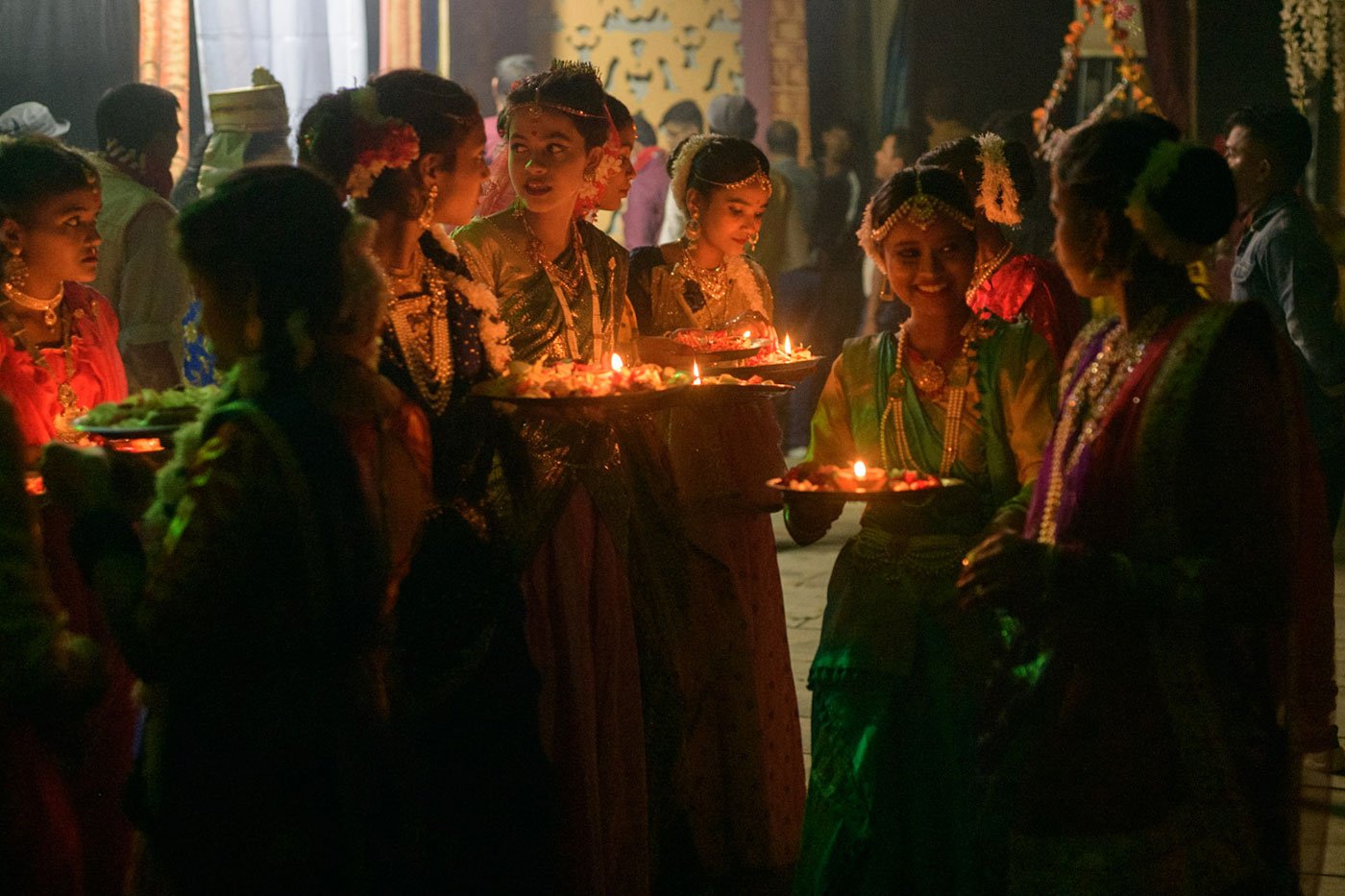
Young women dressed as gopis (female cowherds) prepare backstage for the nandotsav scene where the people of Vrindavan celebrate the birth of Krishna

The Raas Mahotsav celebrates the life of Lord Krishna through dance, drama and musical performances. More than 100 characters may be depicted on stage during a single day of the festival
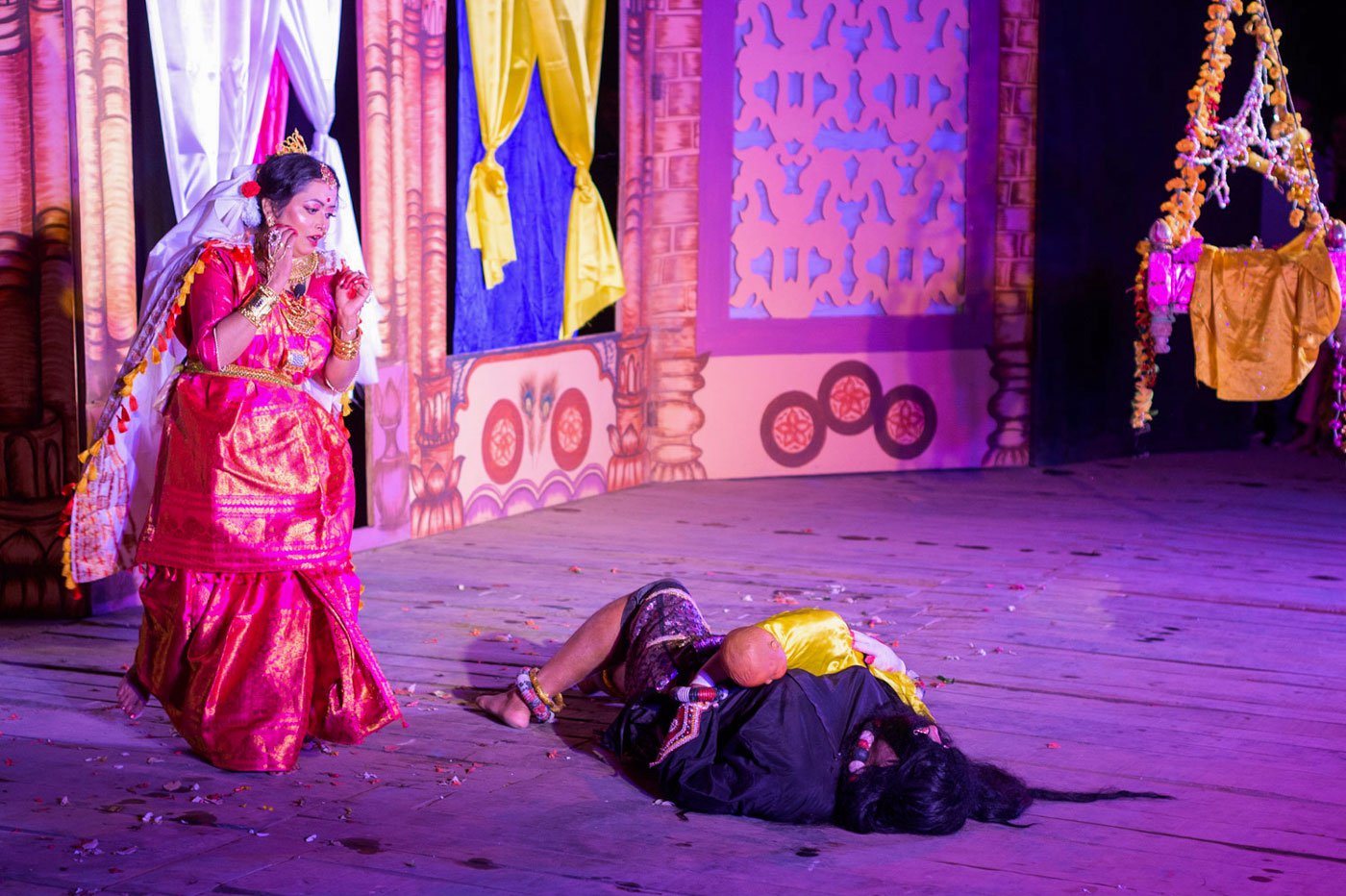
The demoness Putona tries to poison the infant Krishna by breastfeeding him. Instead, she is herself killed. Yashoda (left) walks in on the scene
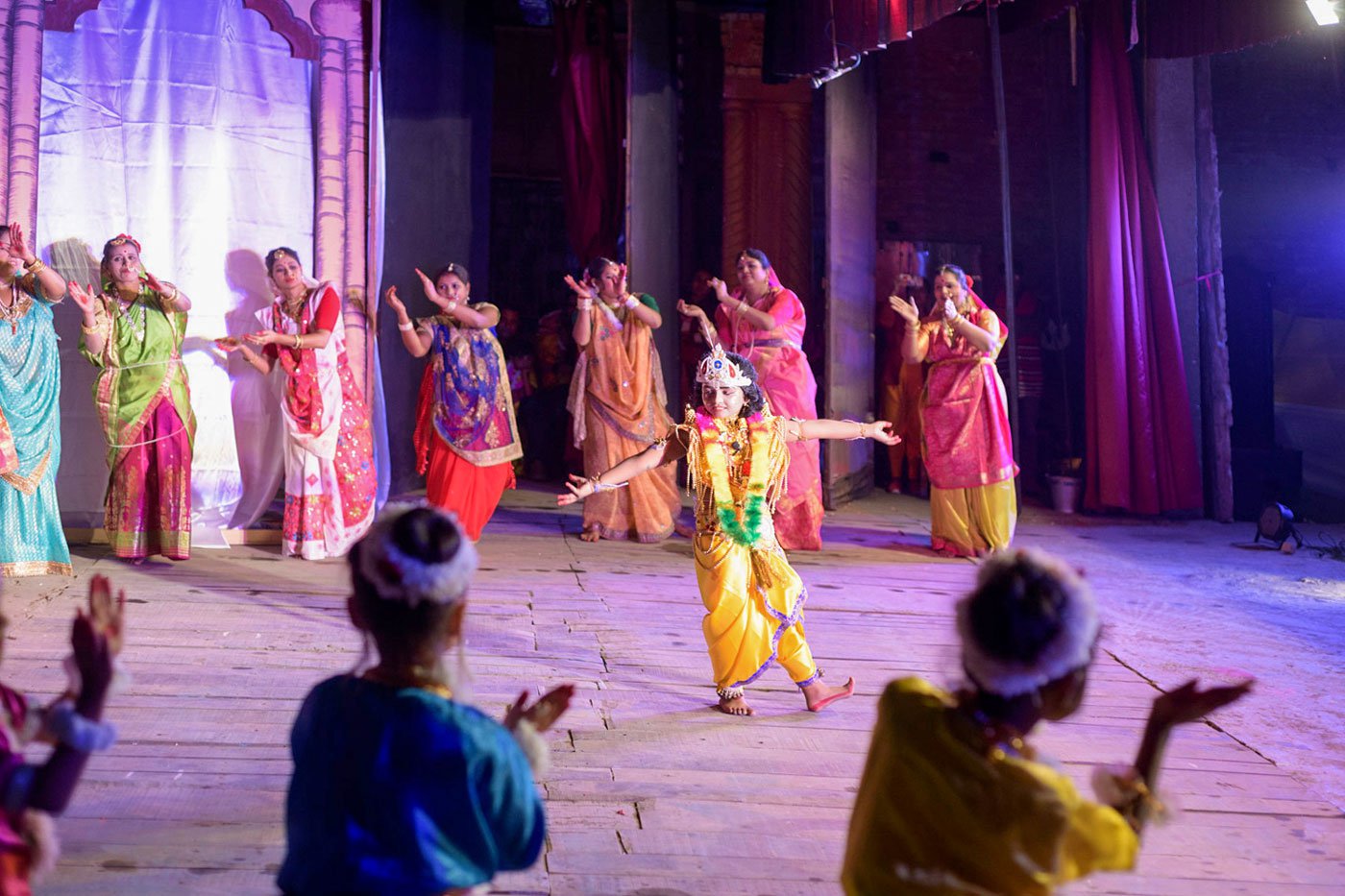
A young Lord Krishna dances with
gopis
in Vrindavan
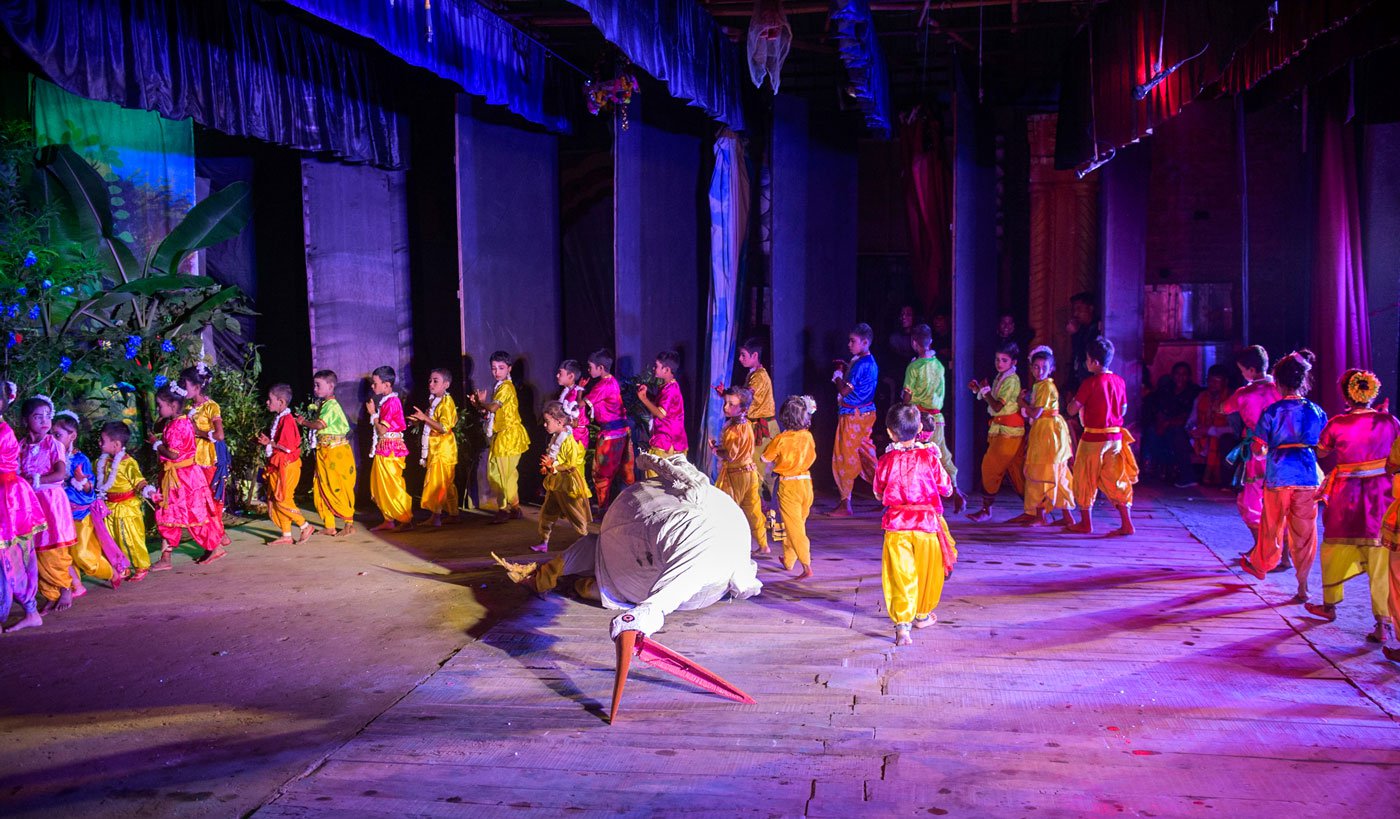
At the Garamur Saru Satra, children acting out the scene where a young Krishna defeats and kills the demon Bokasur, who takes the form of a crane
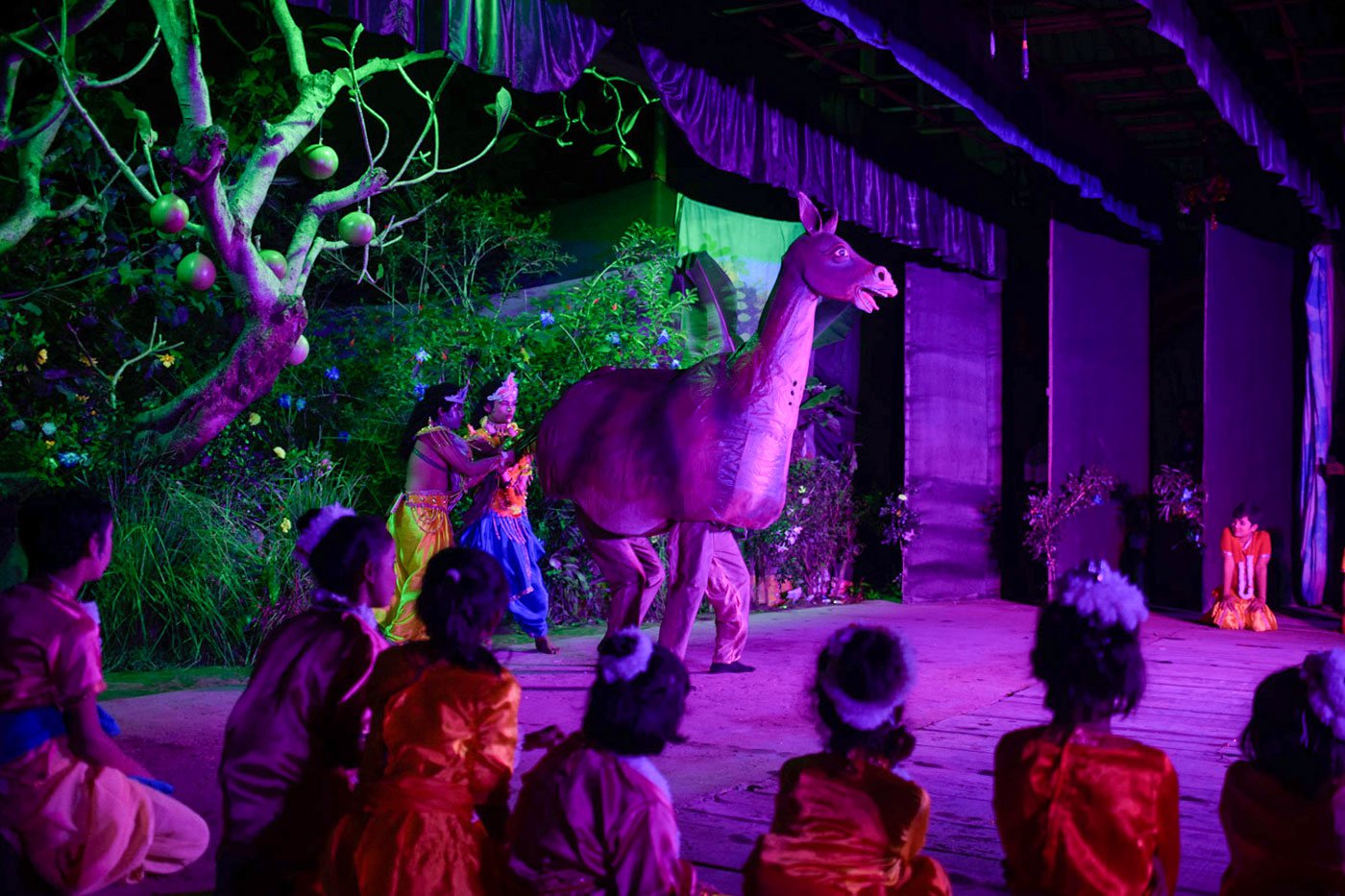
Young actors playing Krishna and his brother Balaram perform the scene of the Dhenukasura
badh
– death of the demon Dhenuka
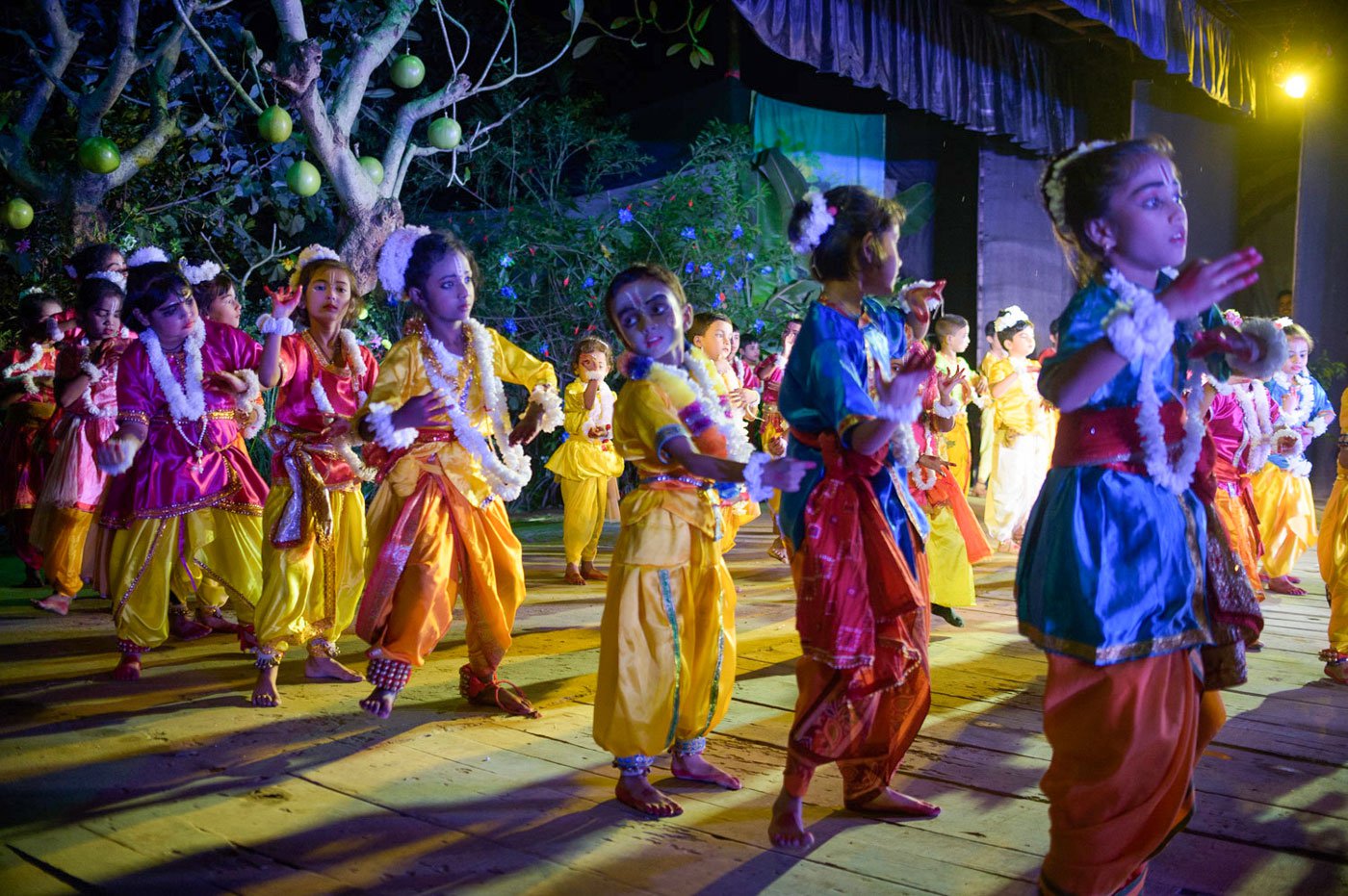
Children make up a large number of the performers at the Garamur Saru Satra Raas Mahotsav held in Majuli, Assam
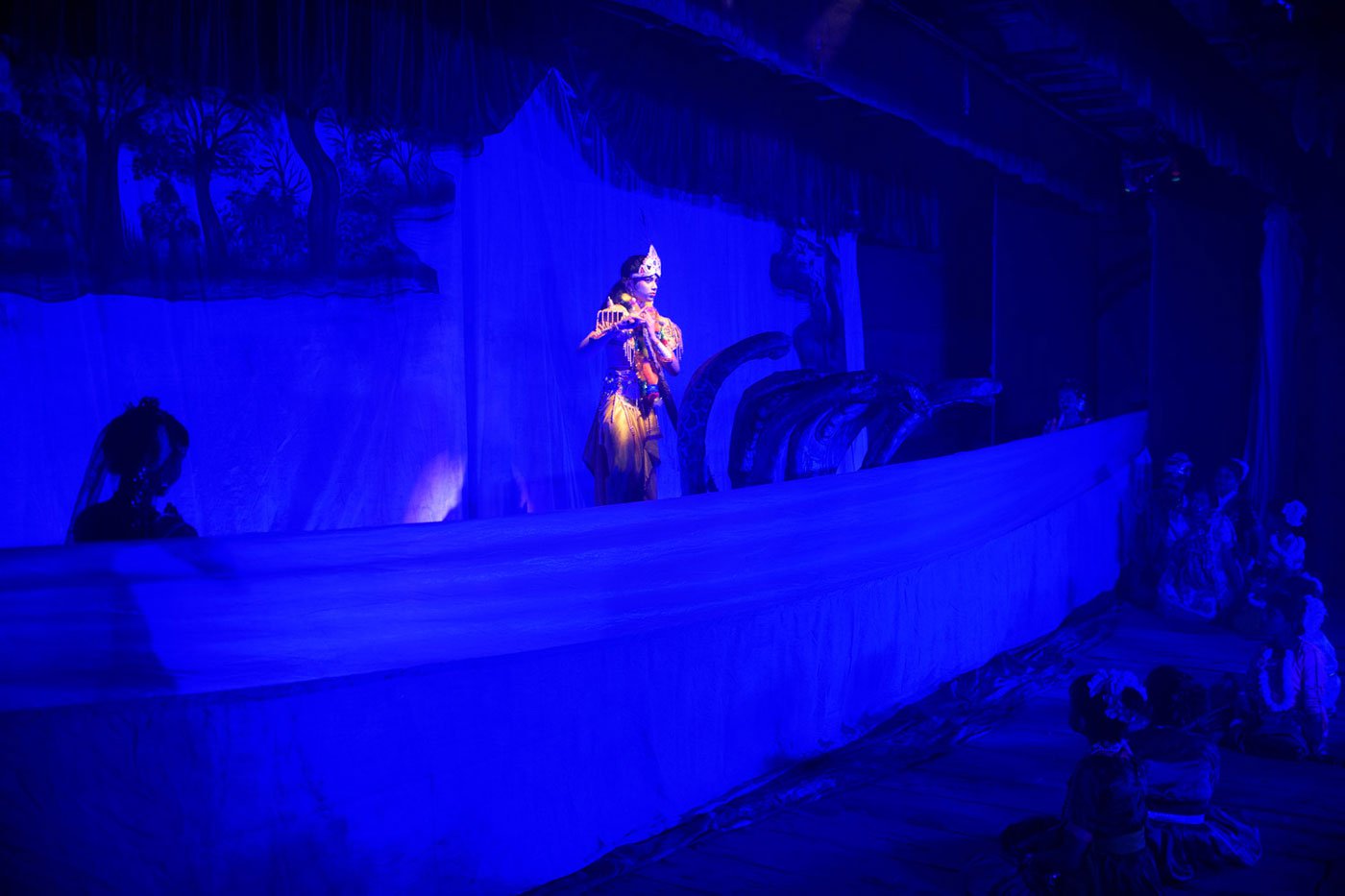
The Kaliyo
daman
scene shows Krishna defeating the Kaliyo Naag living in the Yamuna river and dancing on his head
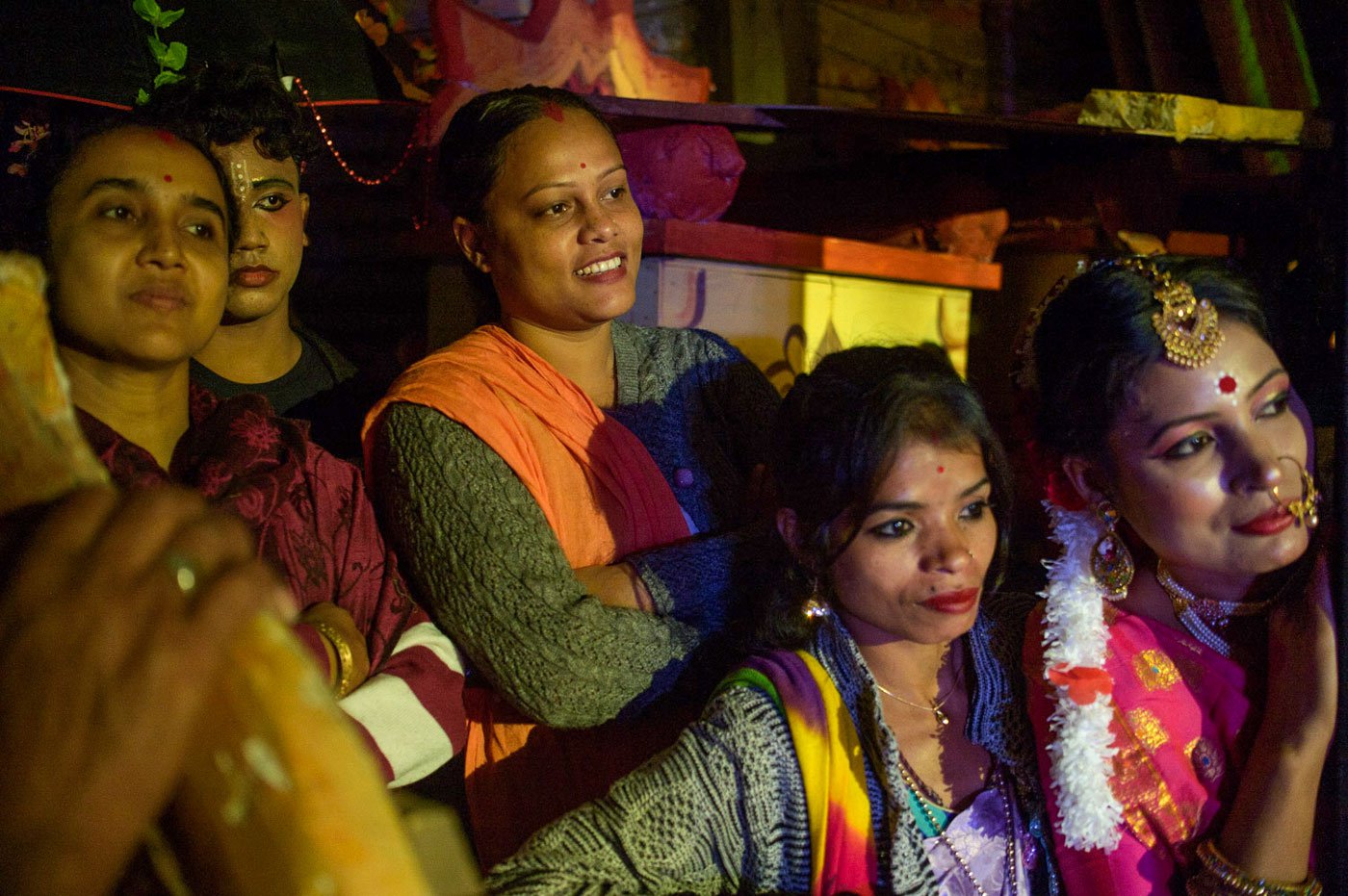
Actors and audience members enjoy the performances from the wings
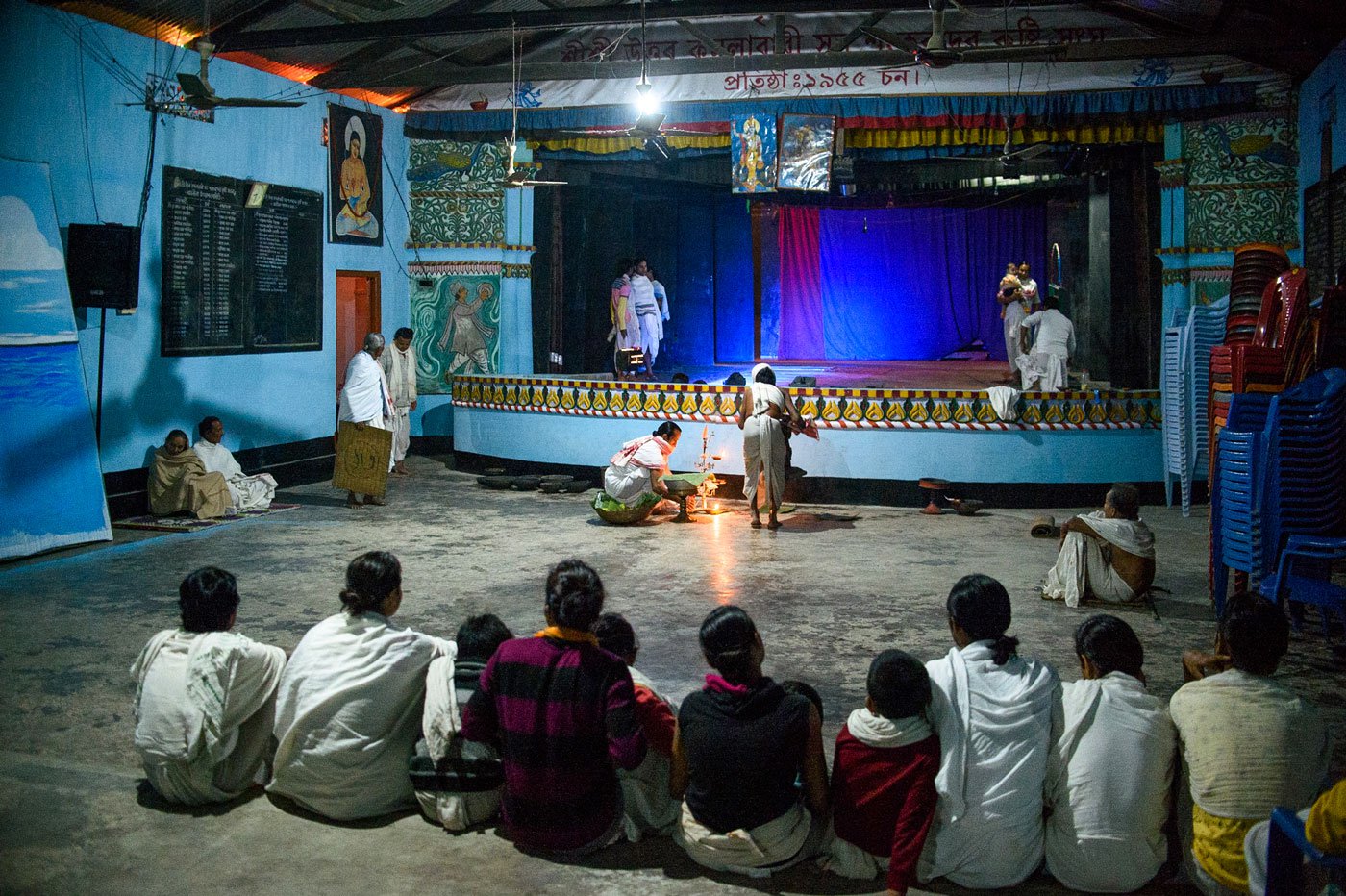
At the Uttar Kamalabari Satra in 2016, monks prepare for the rehearsal of the Keli Gopal play set to be performed at the
mahotsav
. Before this auditorium was built in 1955, performances happened in the
namghar
(prayer house)
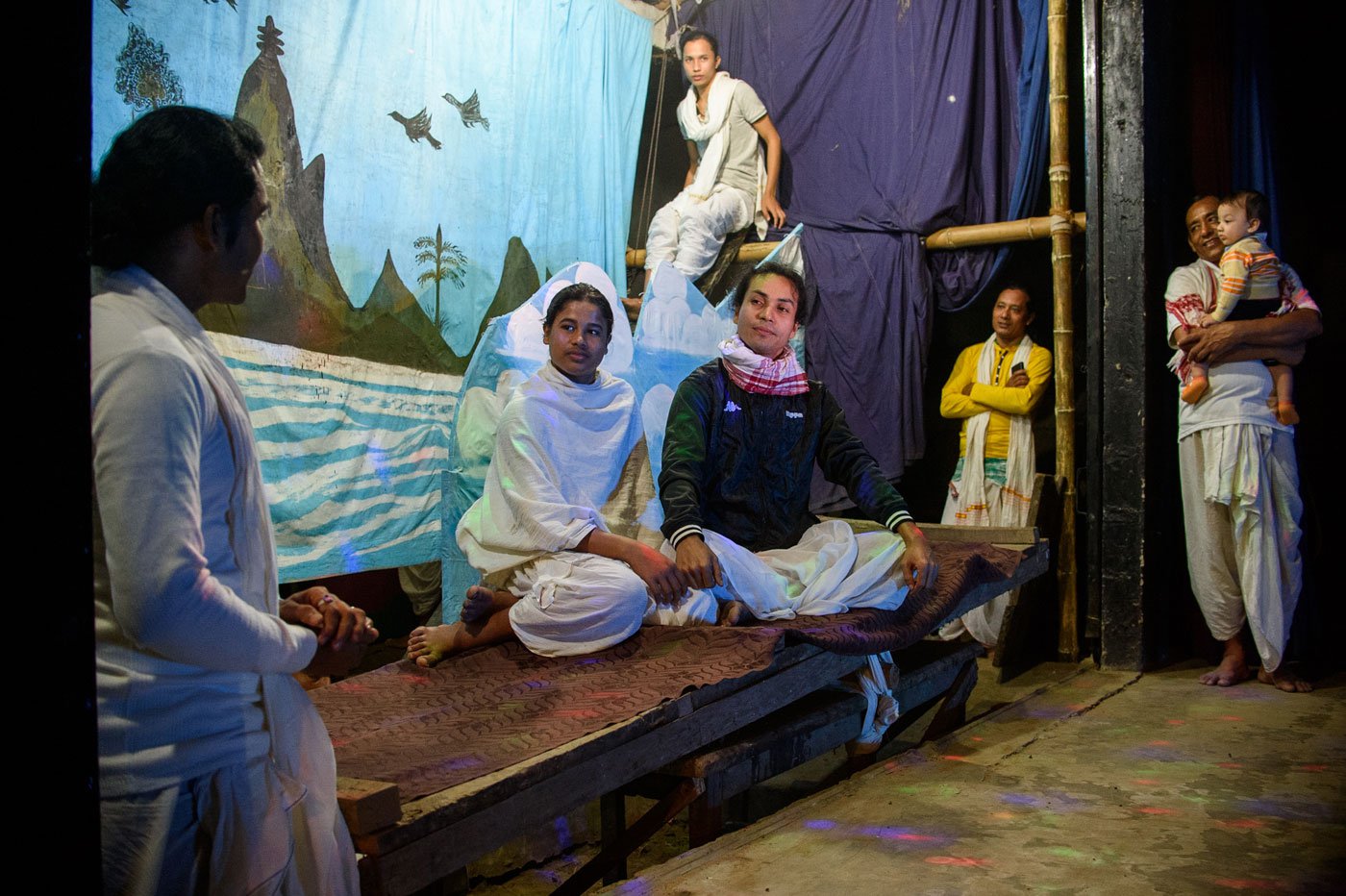
The last day of rehearsals at the Uttar Kamalabari Satra for the Raas Mahotsav

Niranjan Saikia (left) and Krishna Jodumoni Saika (right) – monks from the Uttar Kamalabari Satra – in their
boha
(quarters). Getting into costumes is an elaborate process
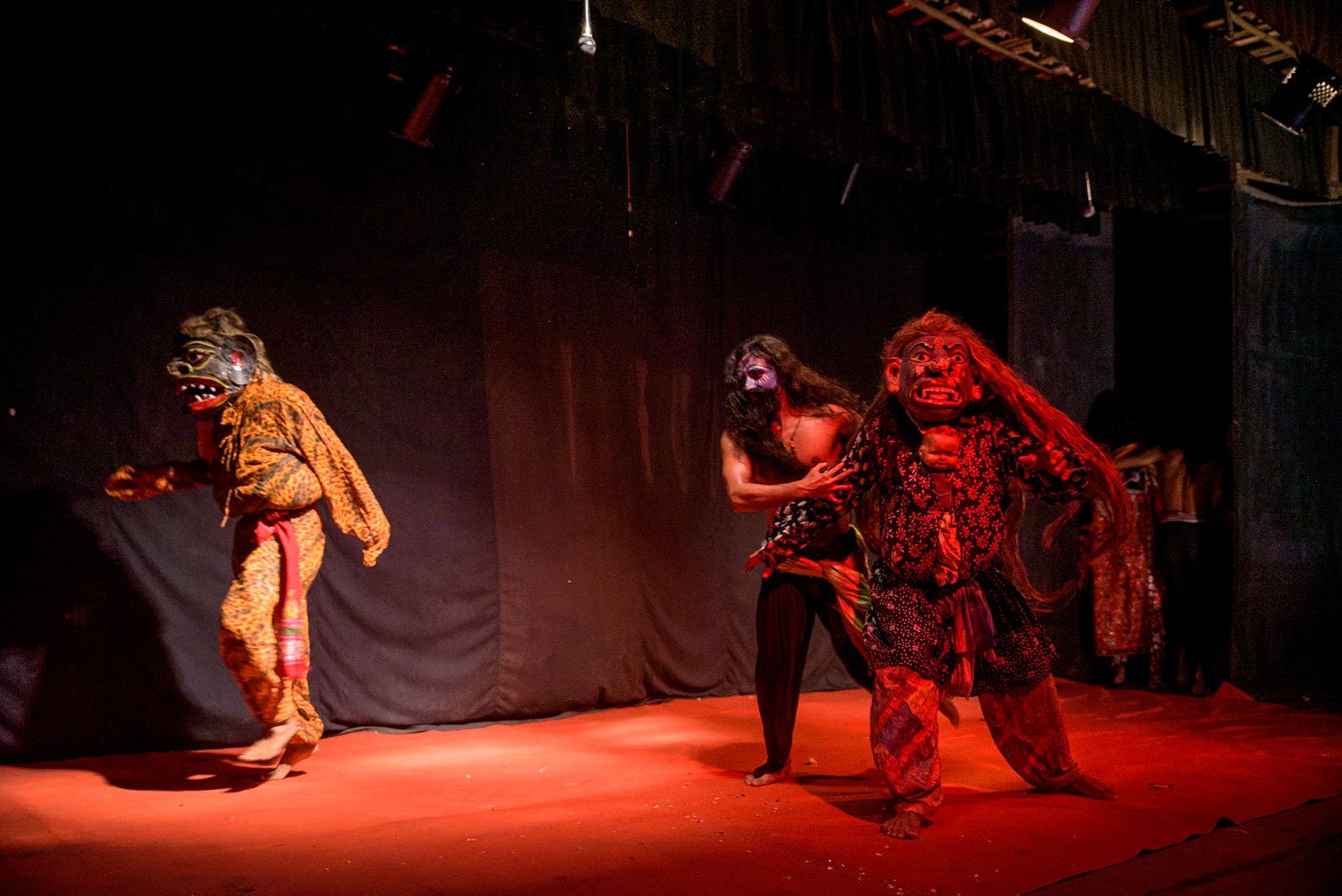
The masks used in the performances and the process of making them are an integral part of the Raas Mahotsav. Here, actors step onto the stage in masks made for the roles of
asuras
and
danabs
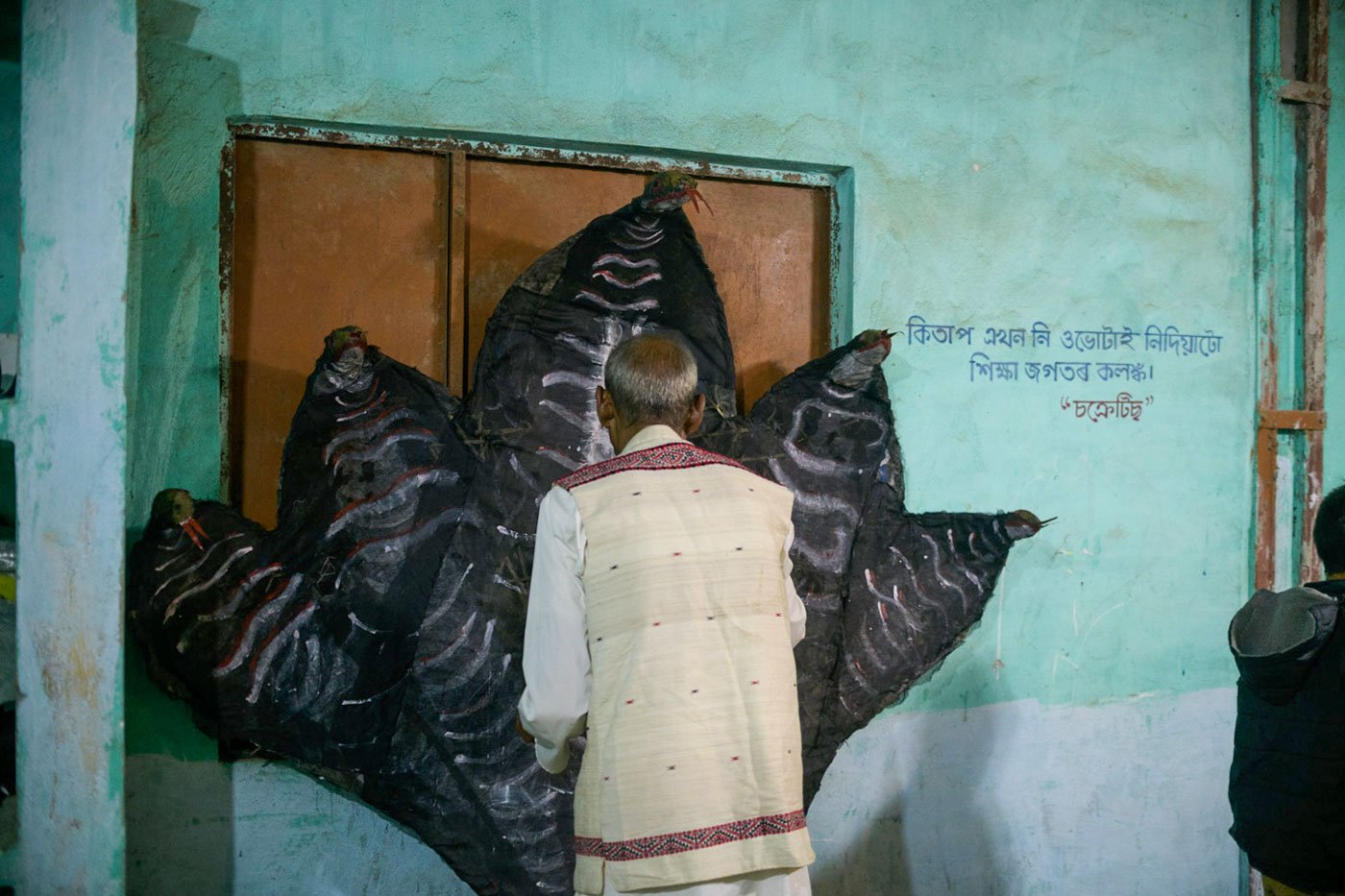
A Kaliyo Naag mask is painted at the Borun Chitadar Chuk village's venue for the festival
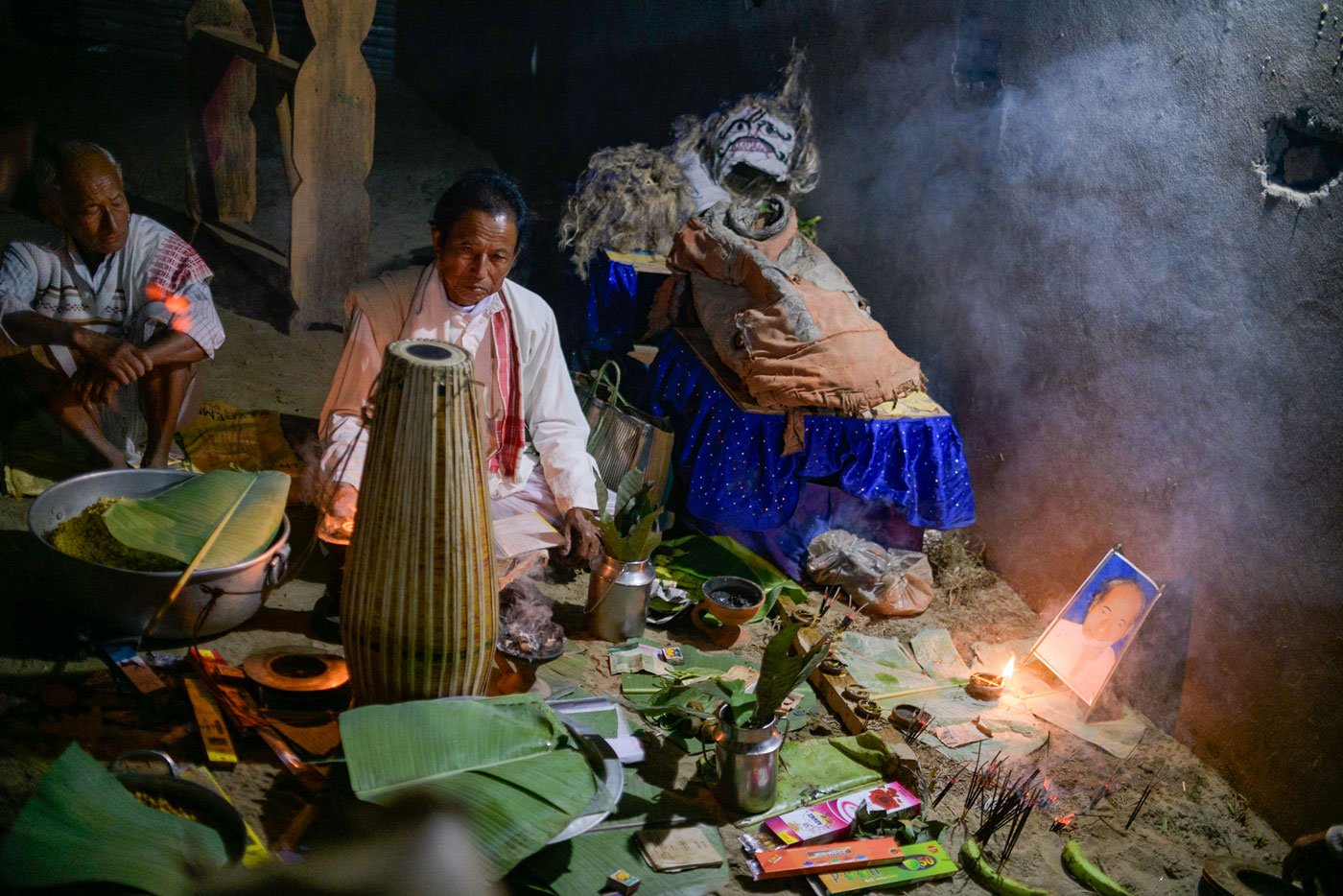
Munim Kaman (centre) lights a lamp in front of Domodar Mili's photograph at the prayers marking the beginning of the festival in Borun Chitadar Chuk. Mili, who passed away a decade ago, taught the people of the village to organise raas
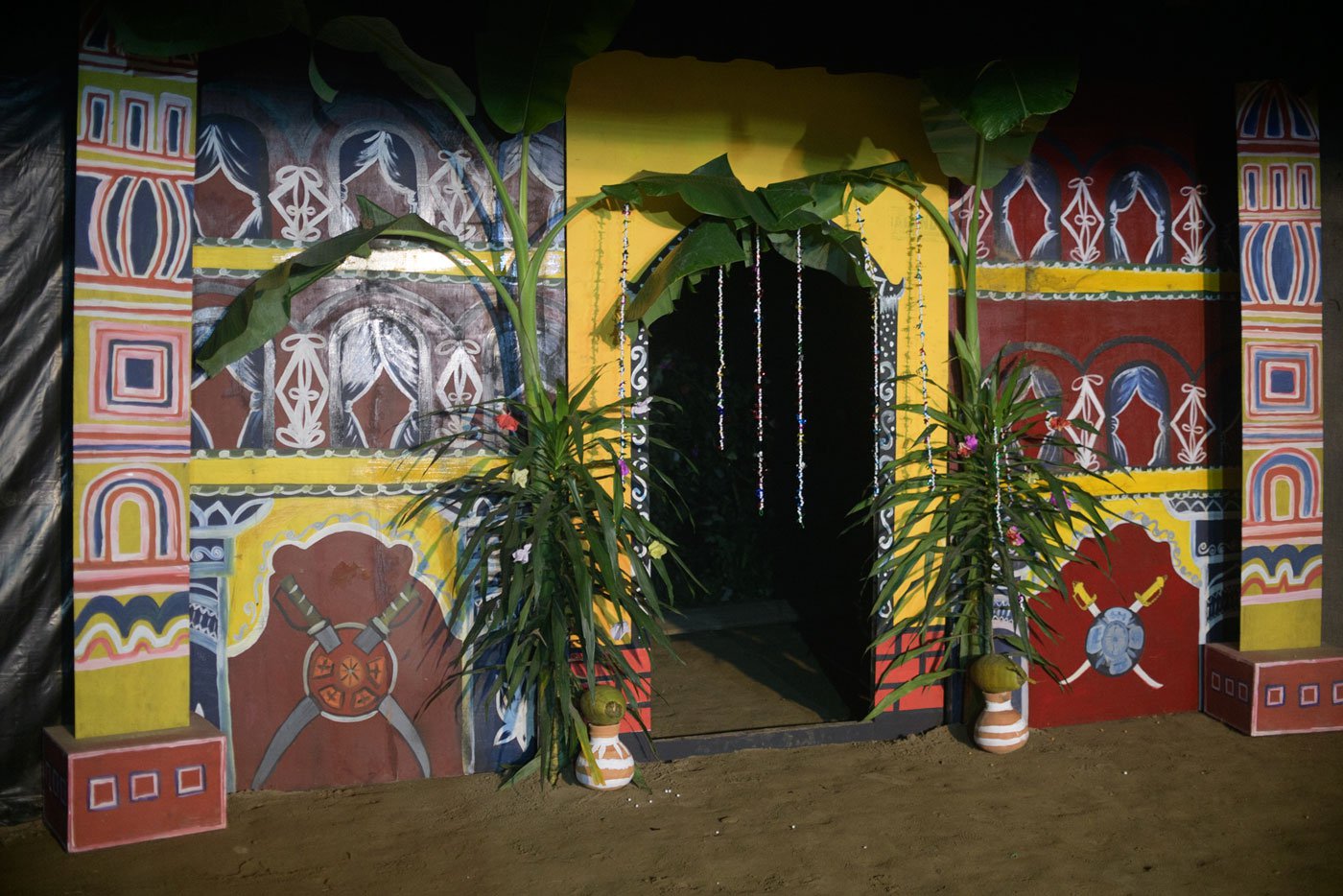
The stage at Borun Chitadar Chuk in Majuli
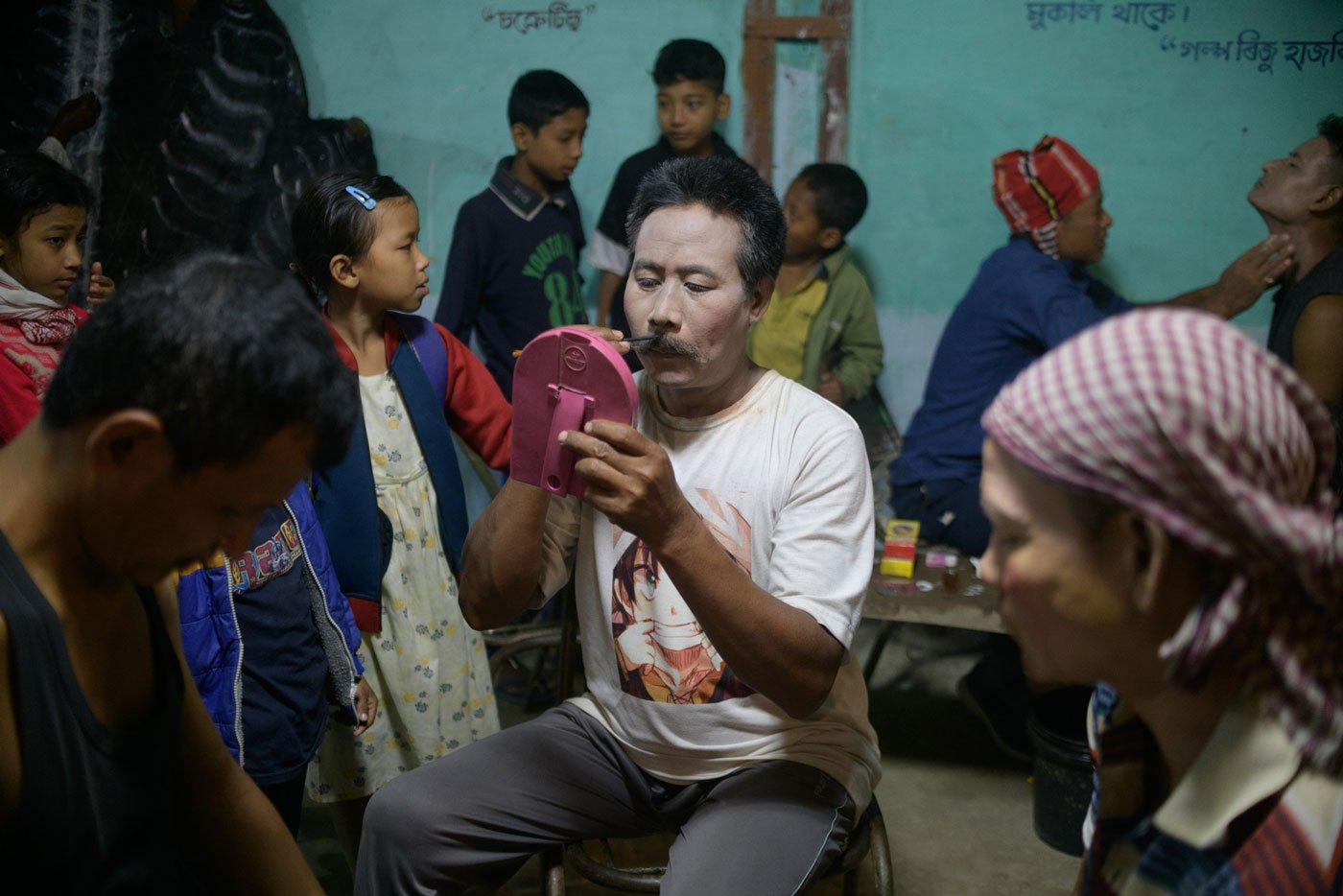
Apurbo Kaman (centre) pepares for his performance. He has been performing the role of Kansa at the Borun Chitadar Chuk festival for several years now
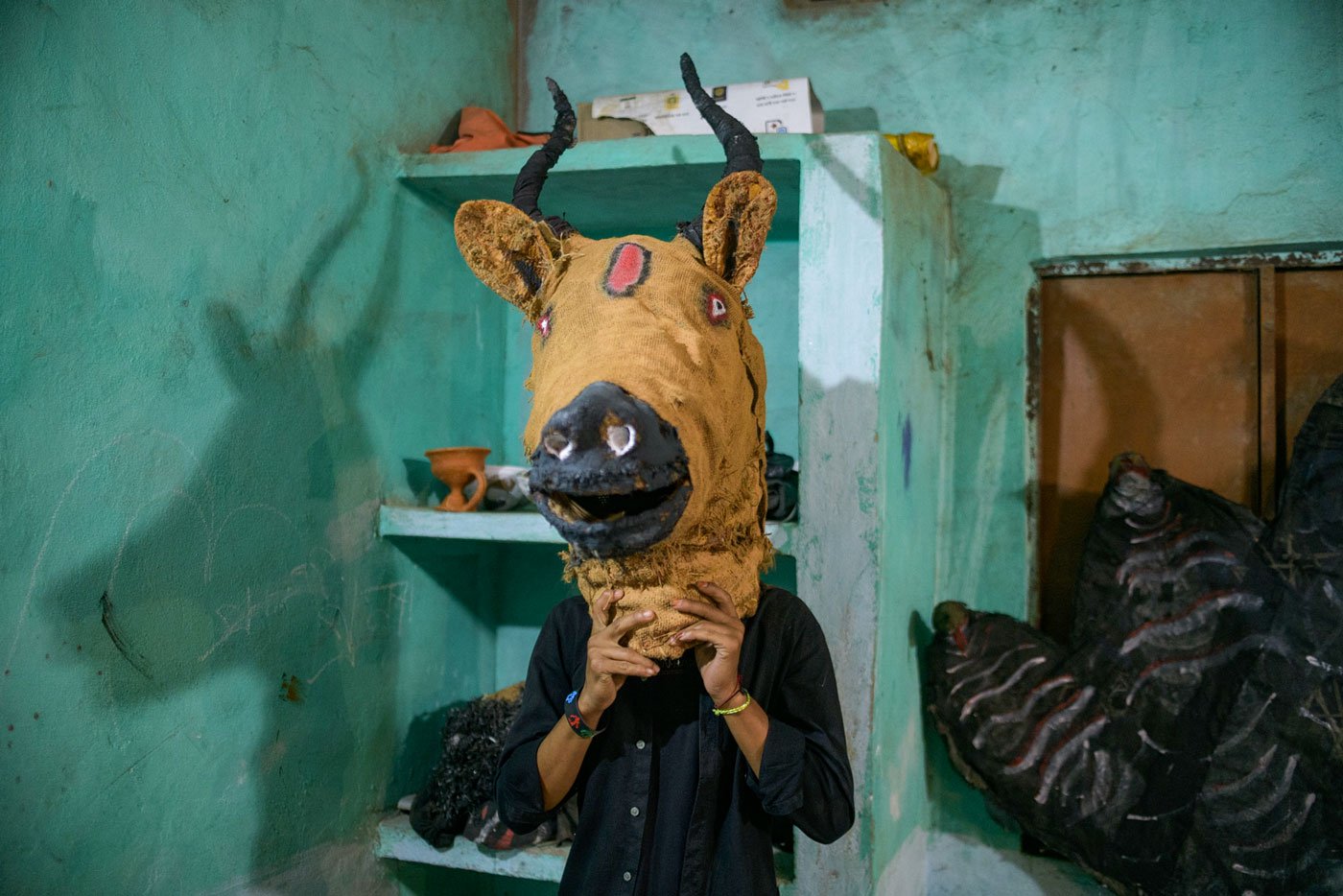
A young boy tries out one of the masks to be used in the performance
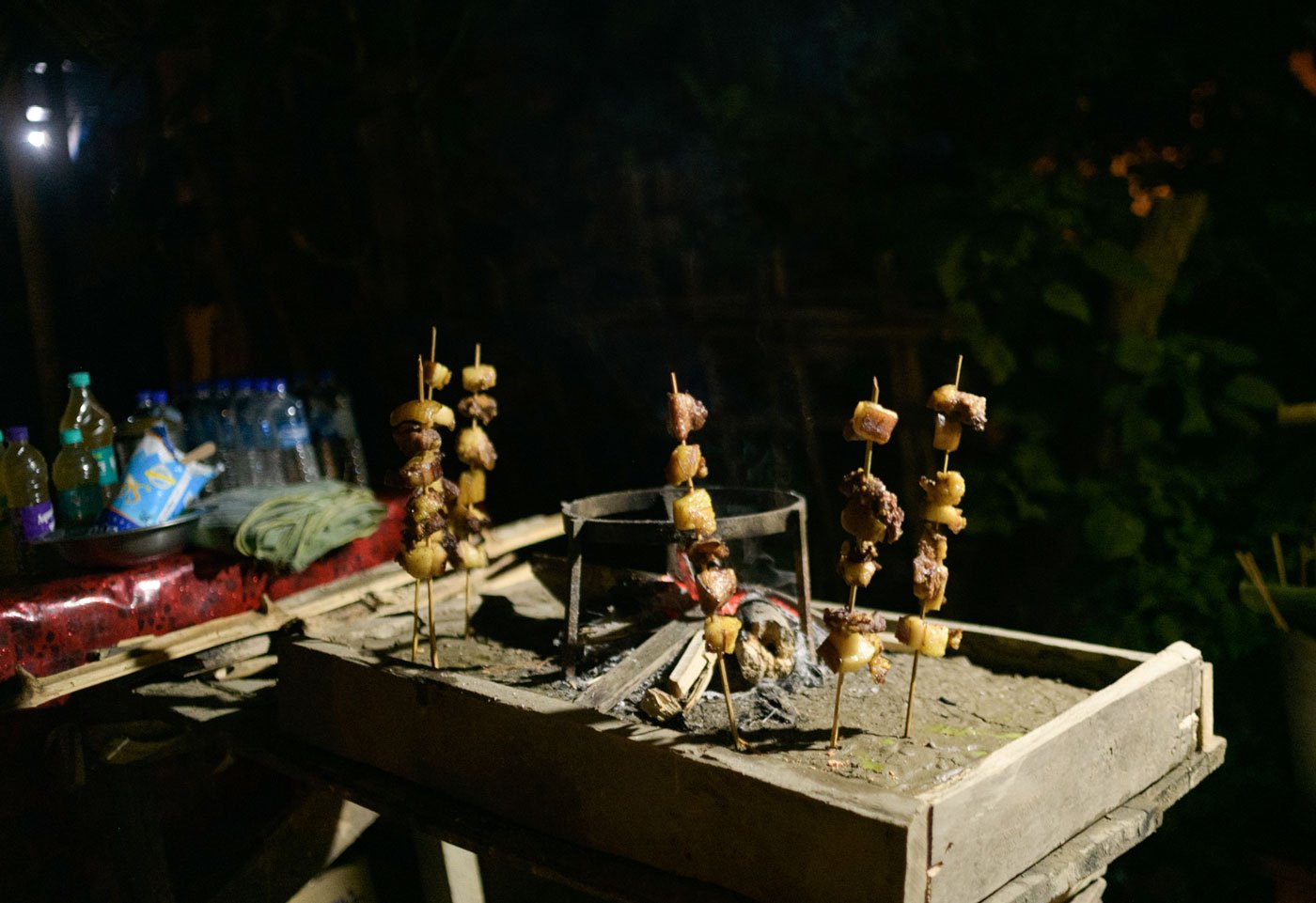
Roasted pork and apong , a traditional rice beer made by the Mising community, are popular fare at the Borun Chitadar Chuk mahotsav
This story is supported by a fellowship from Mrinalini Mukherjee Foundation (MMF).
